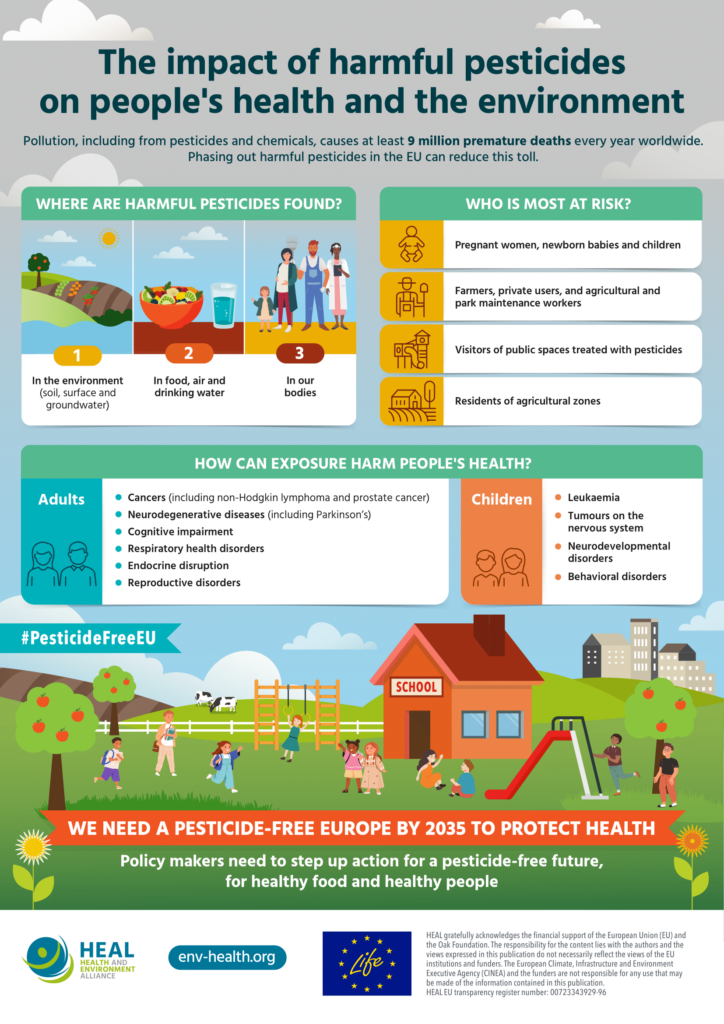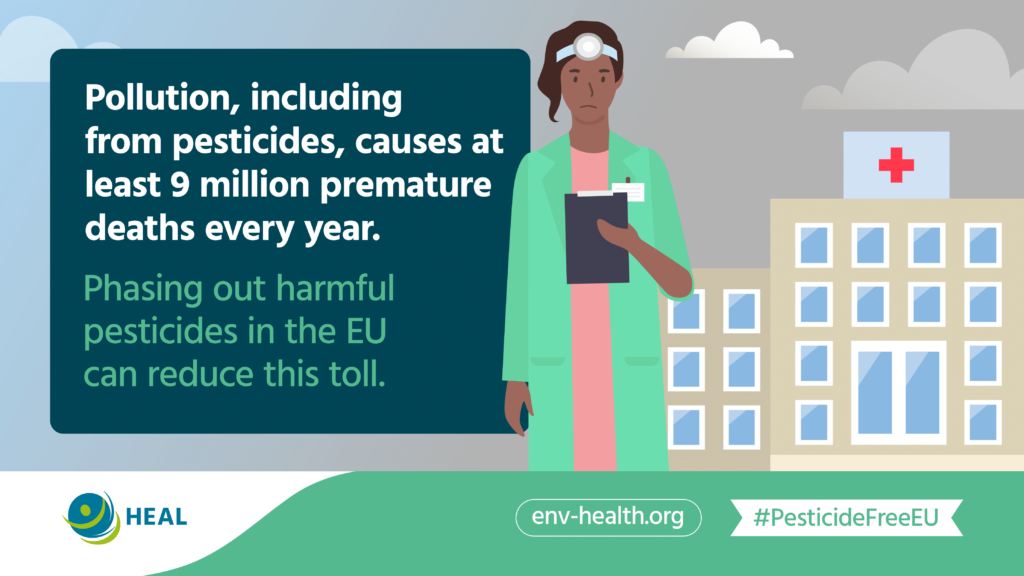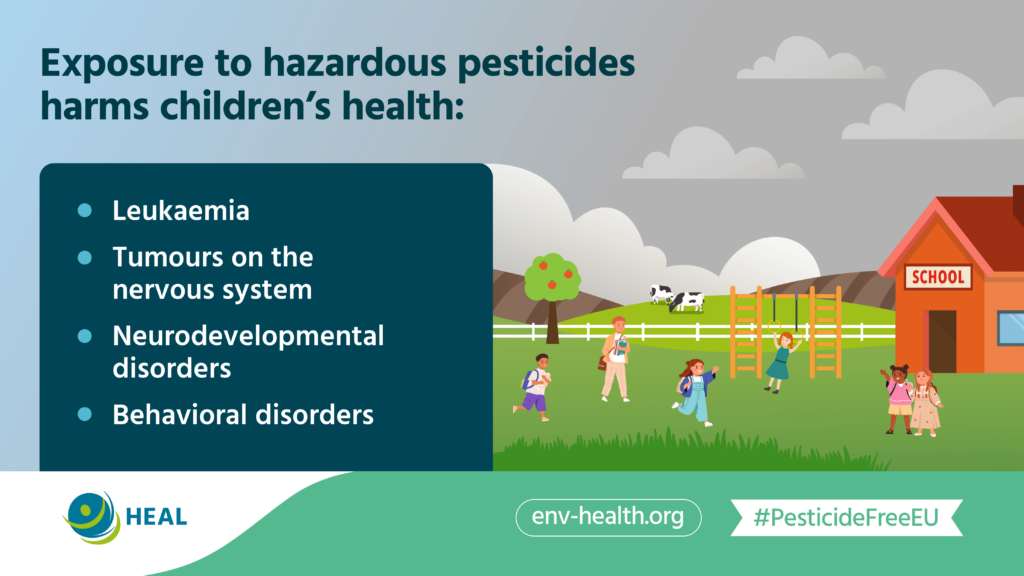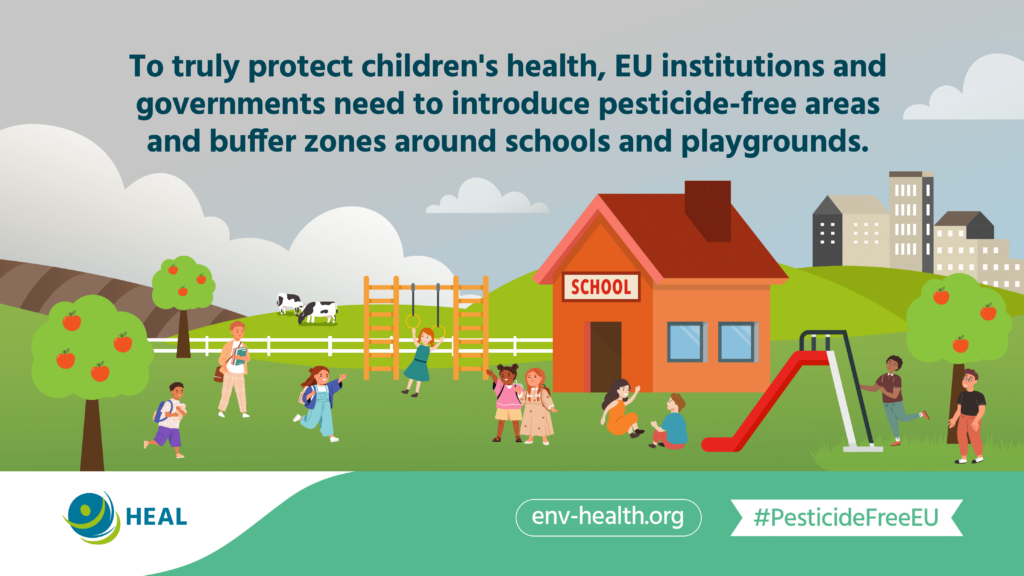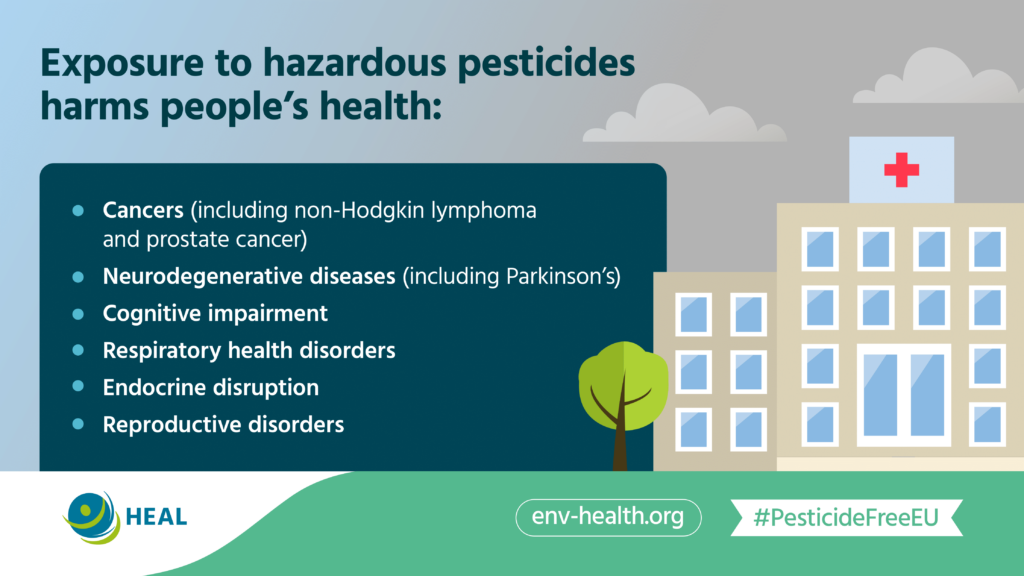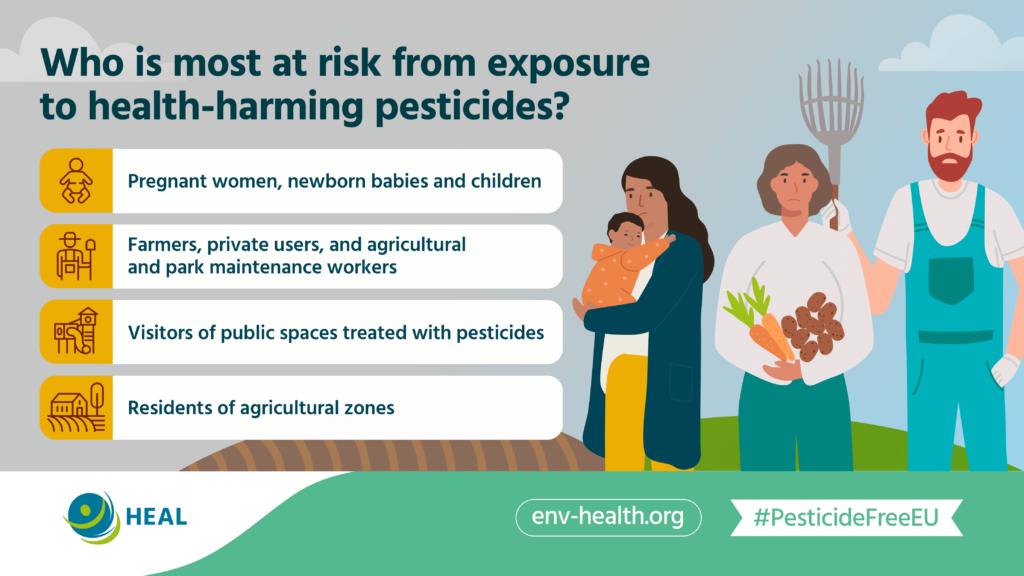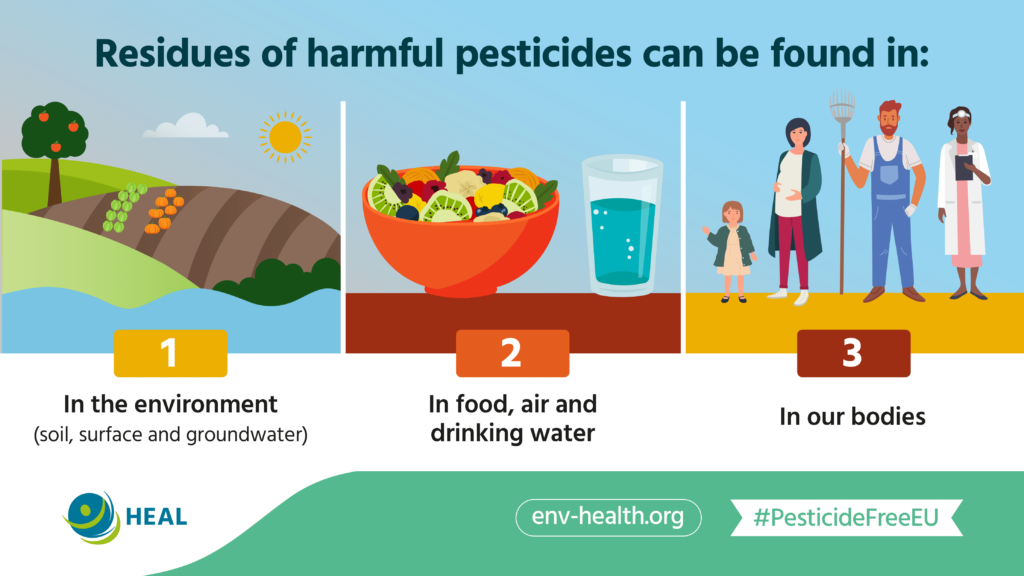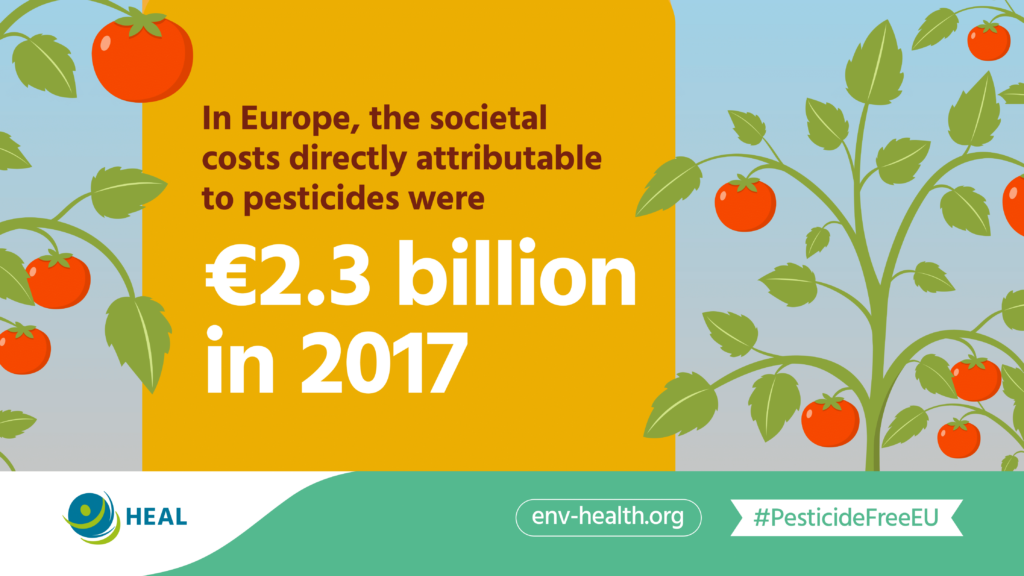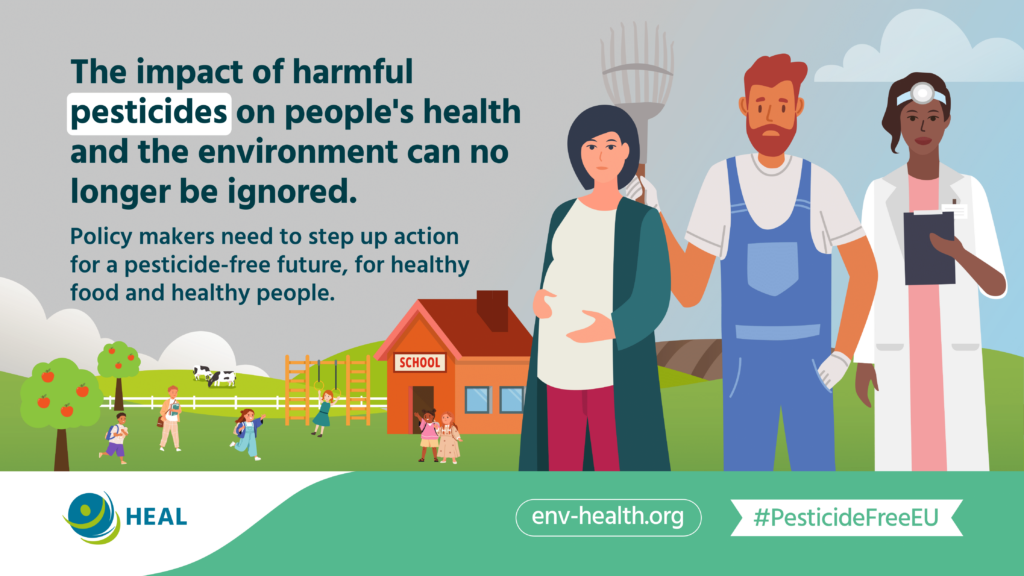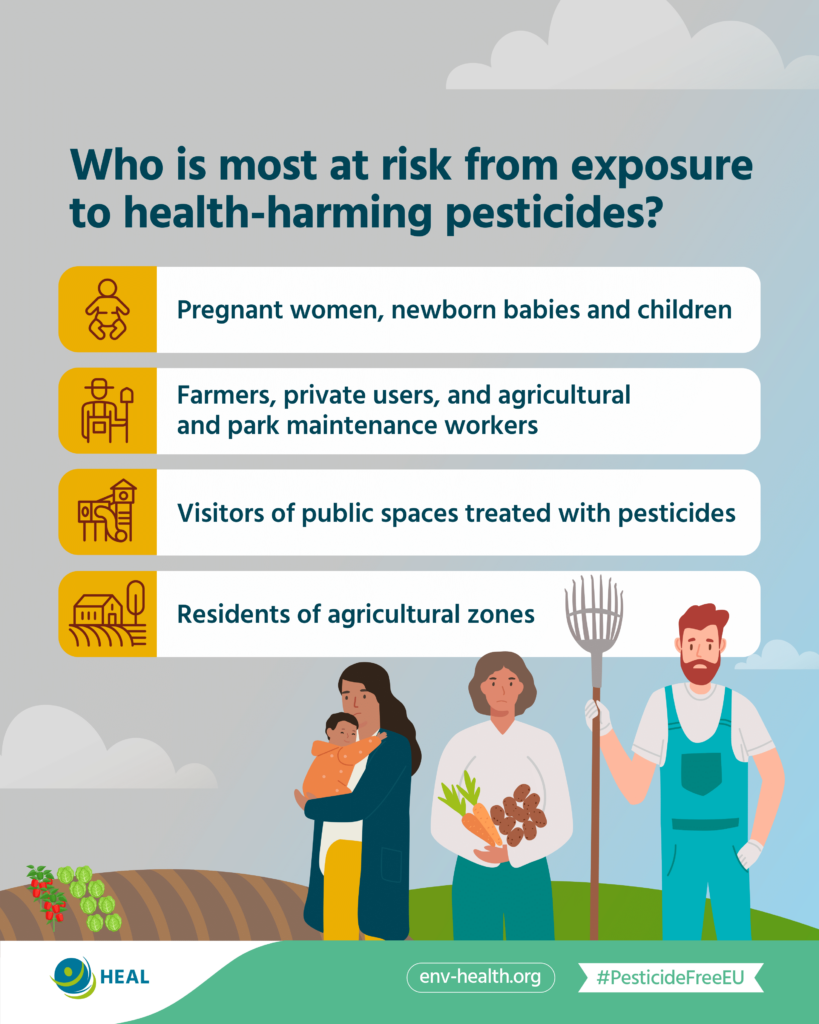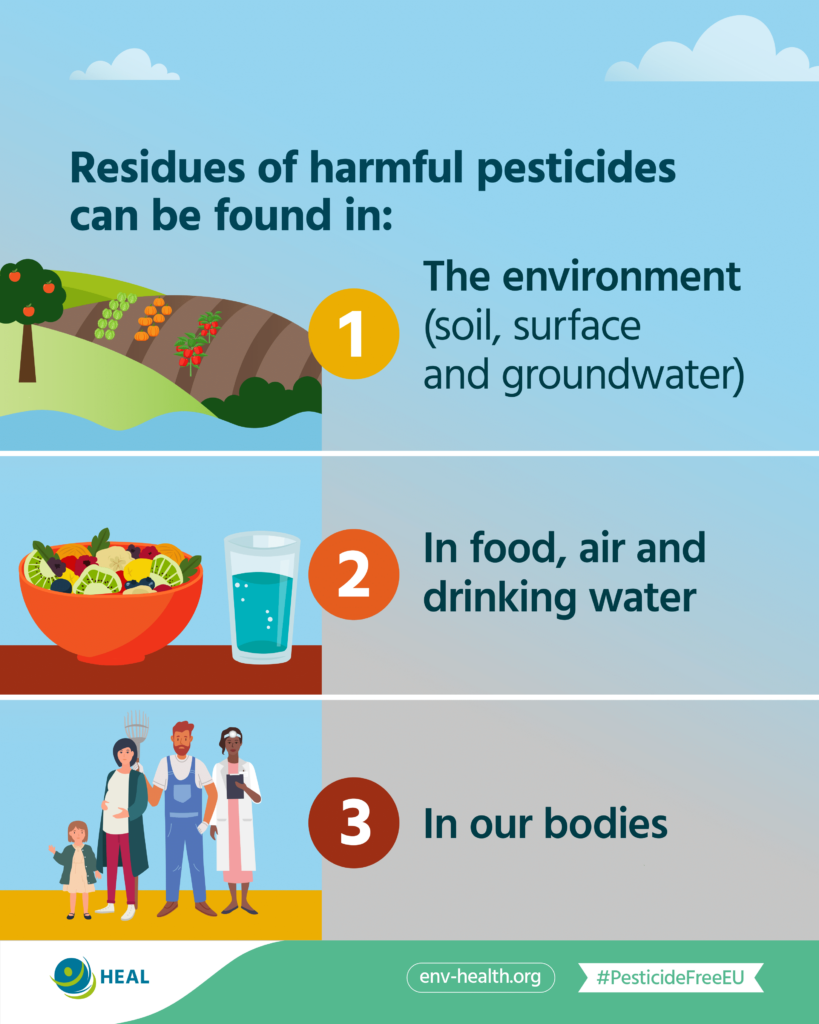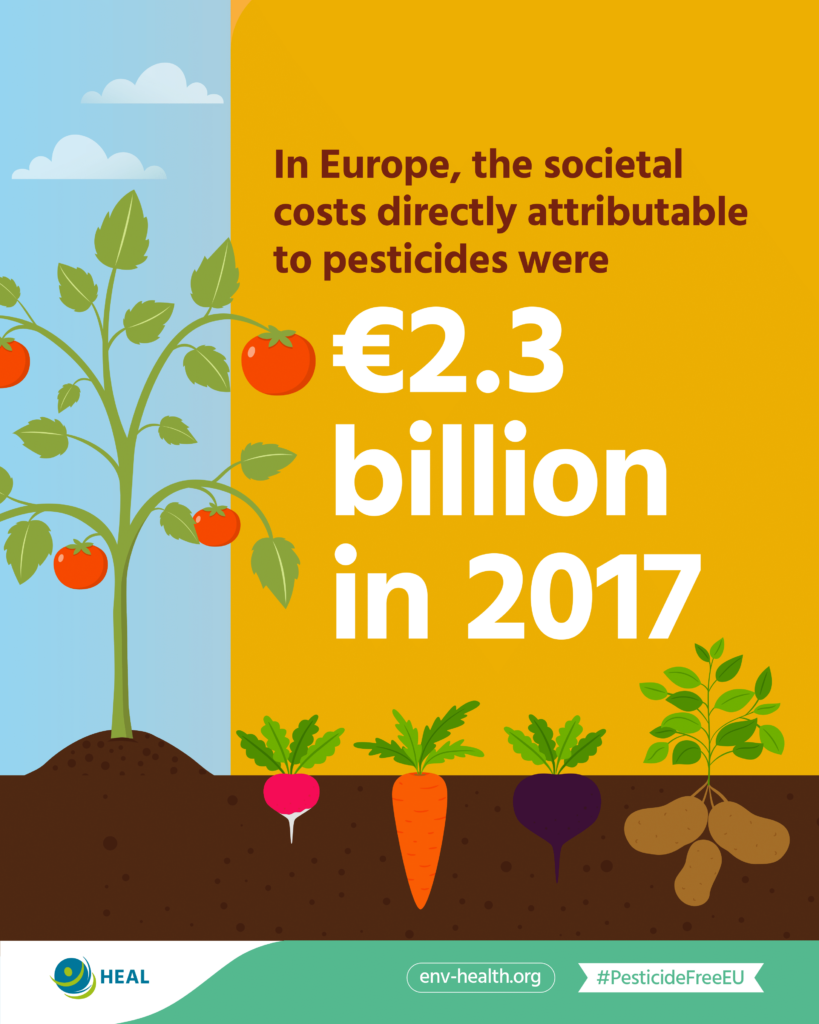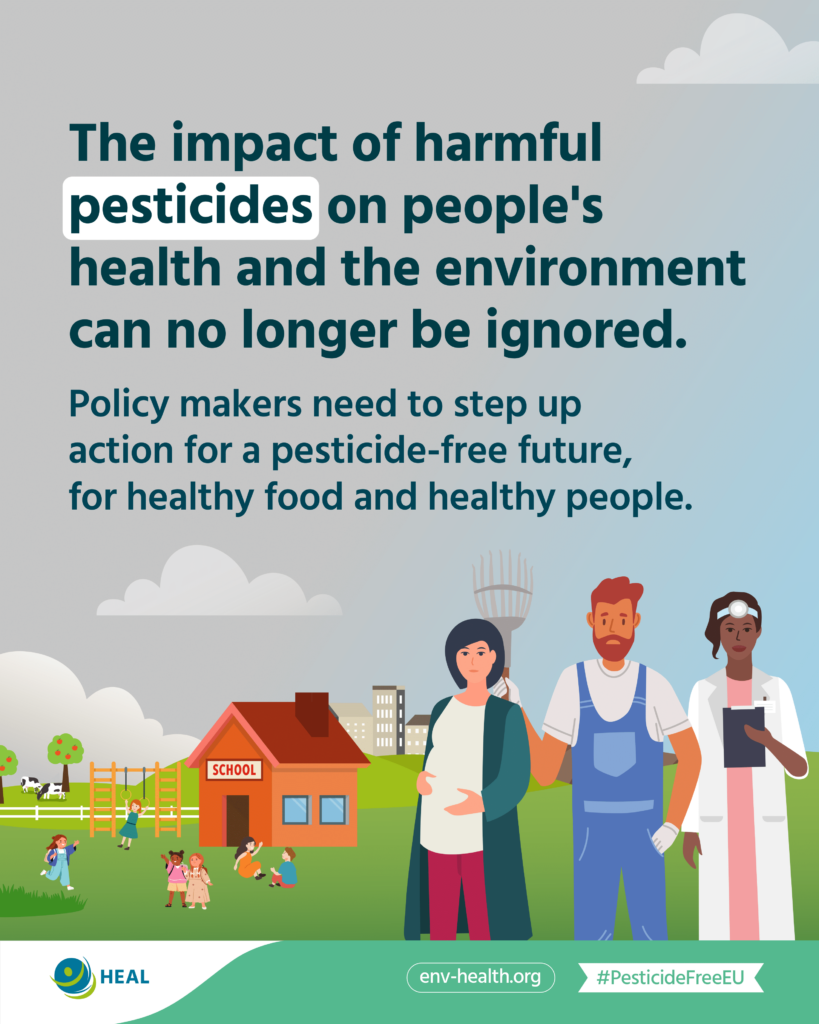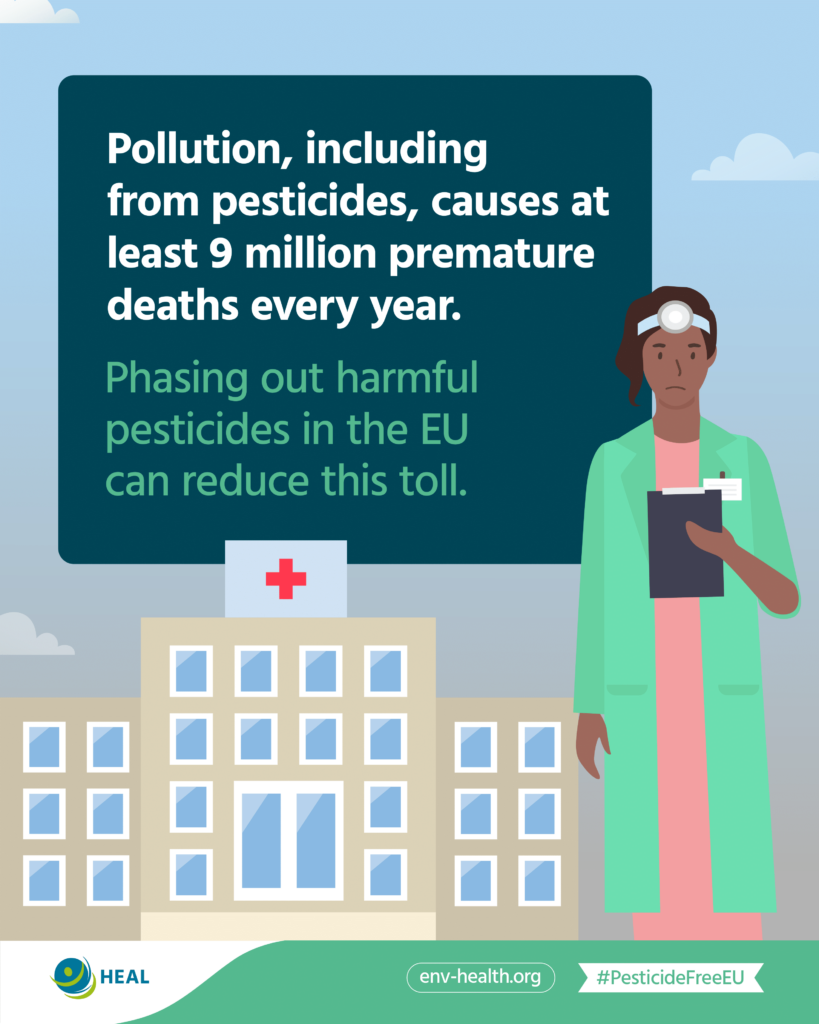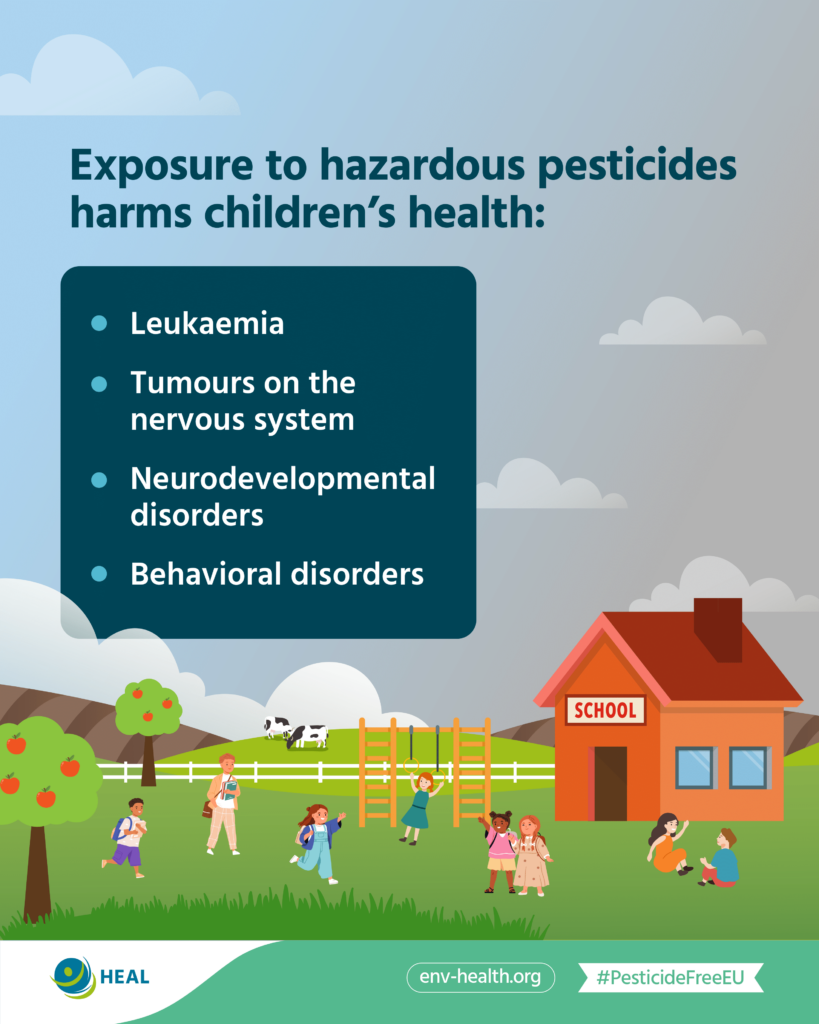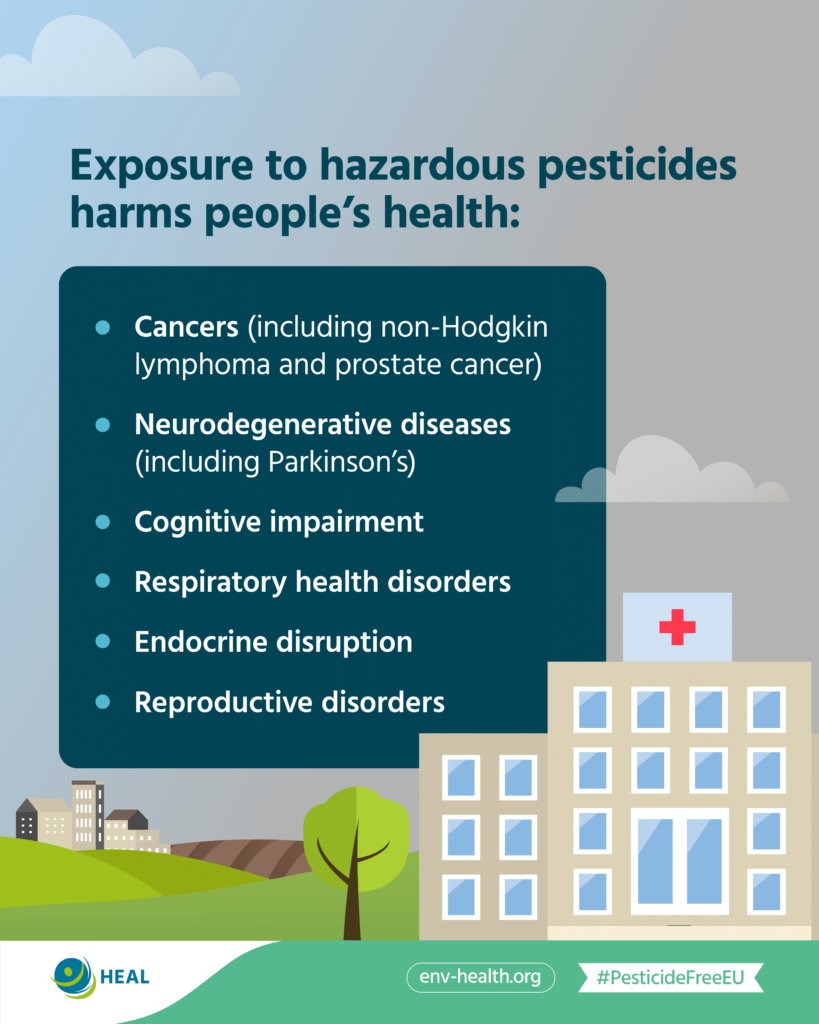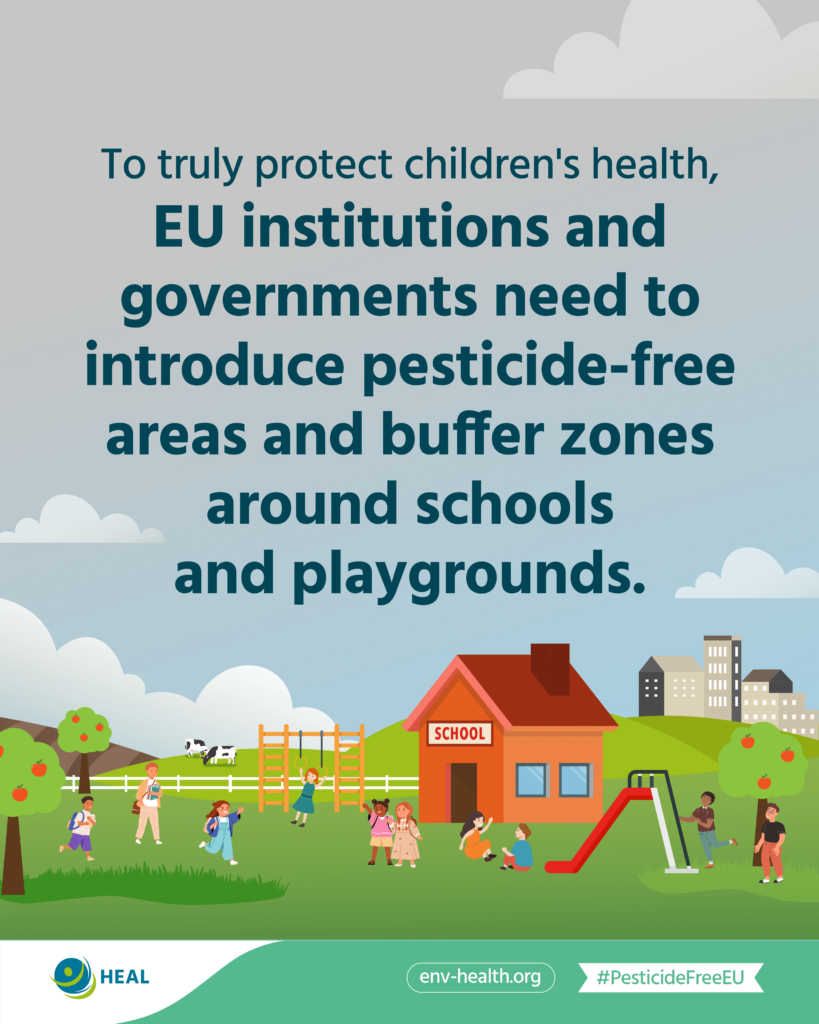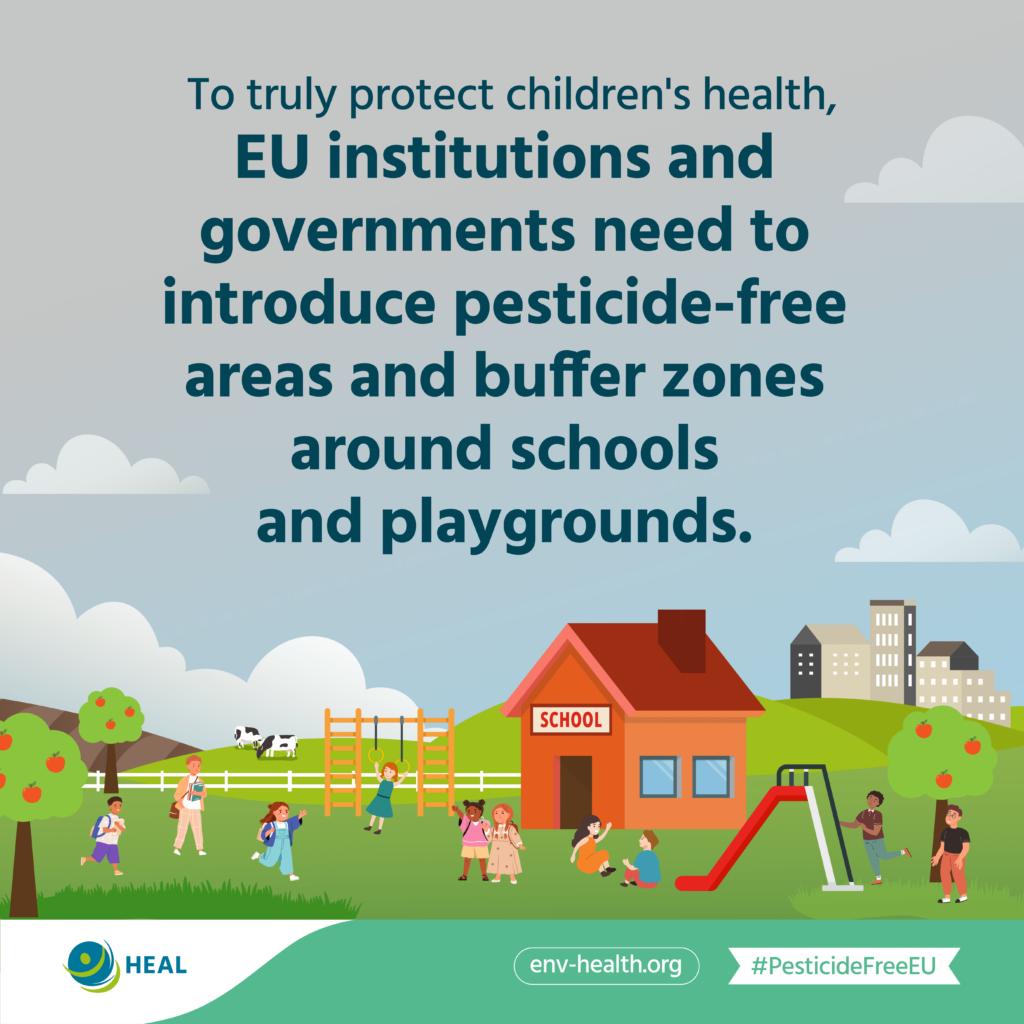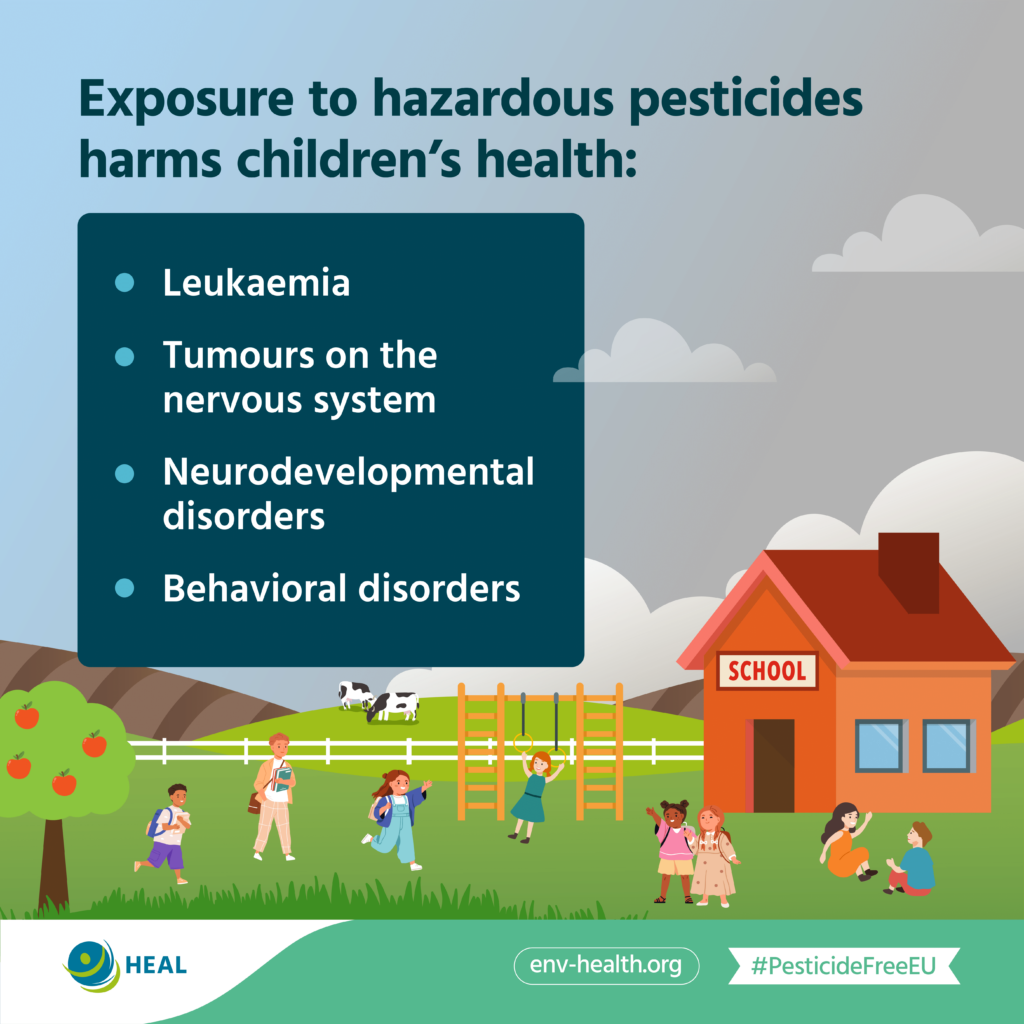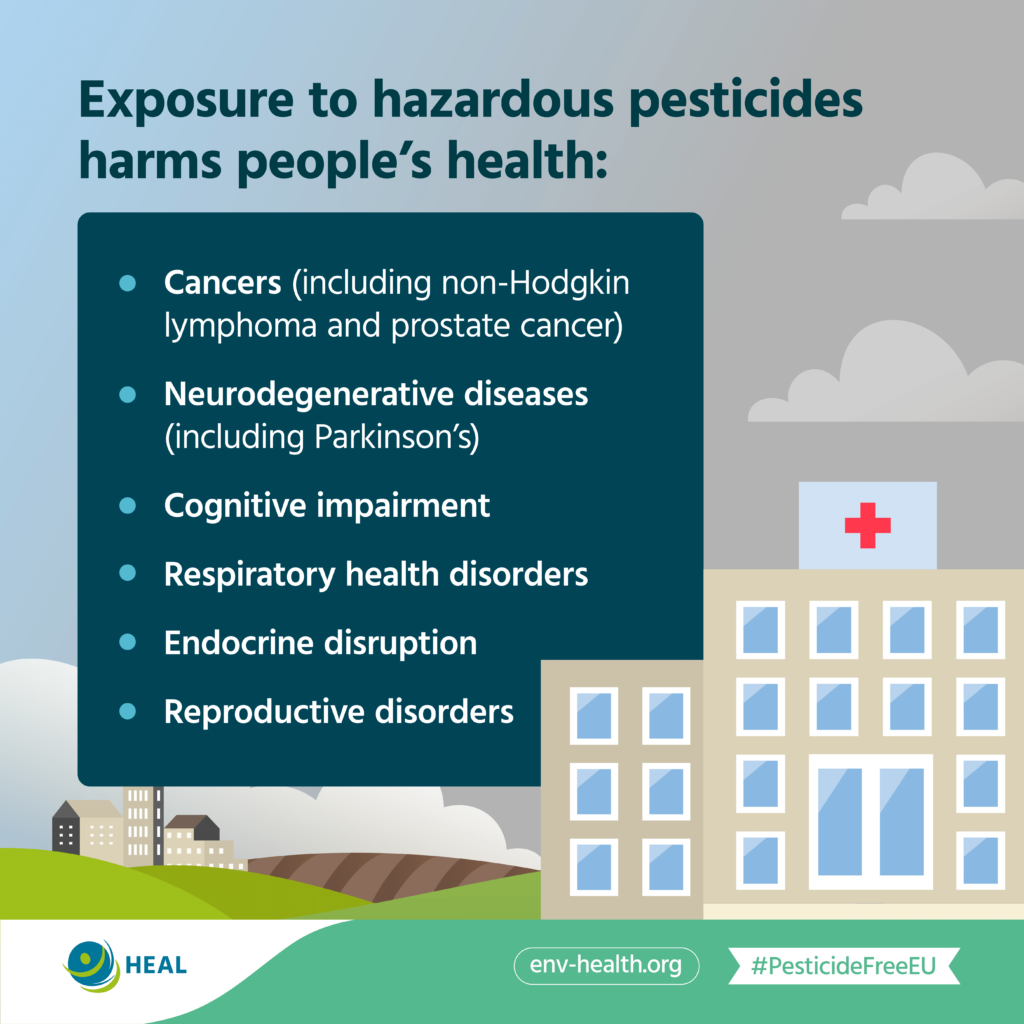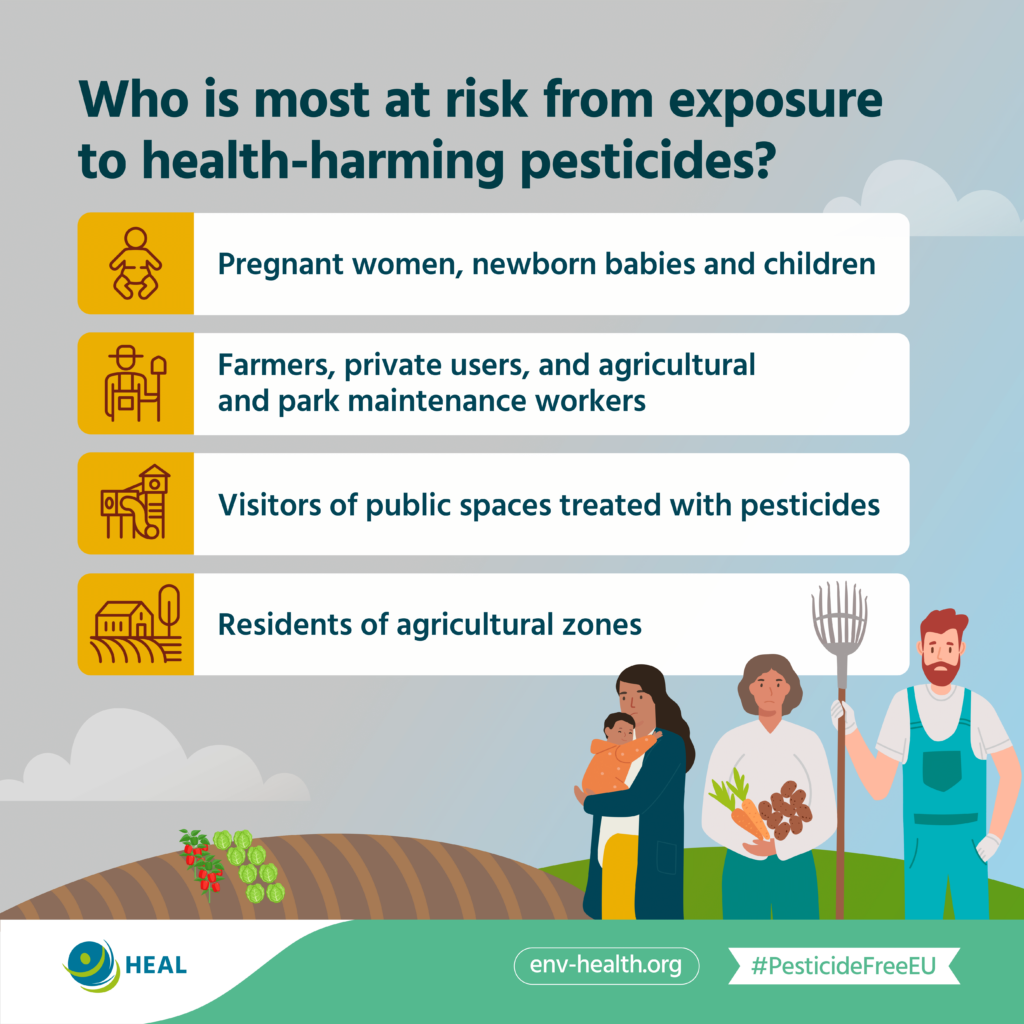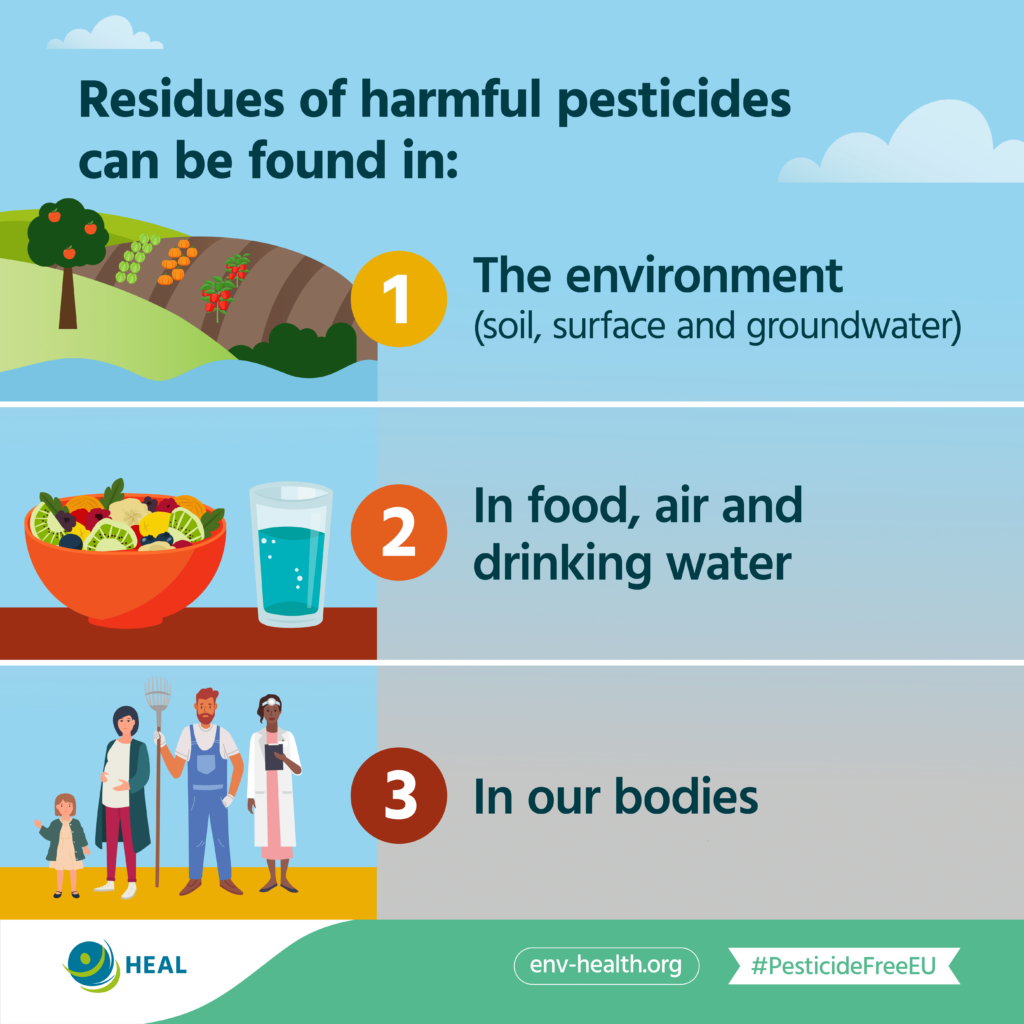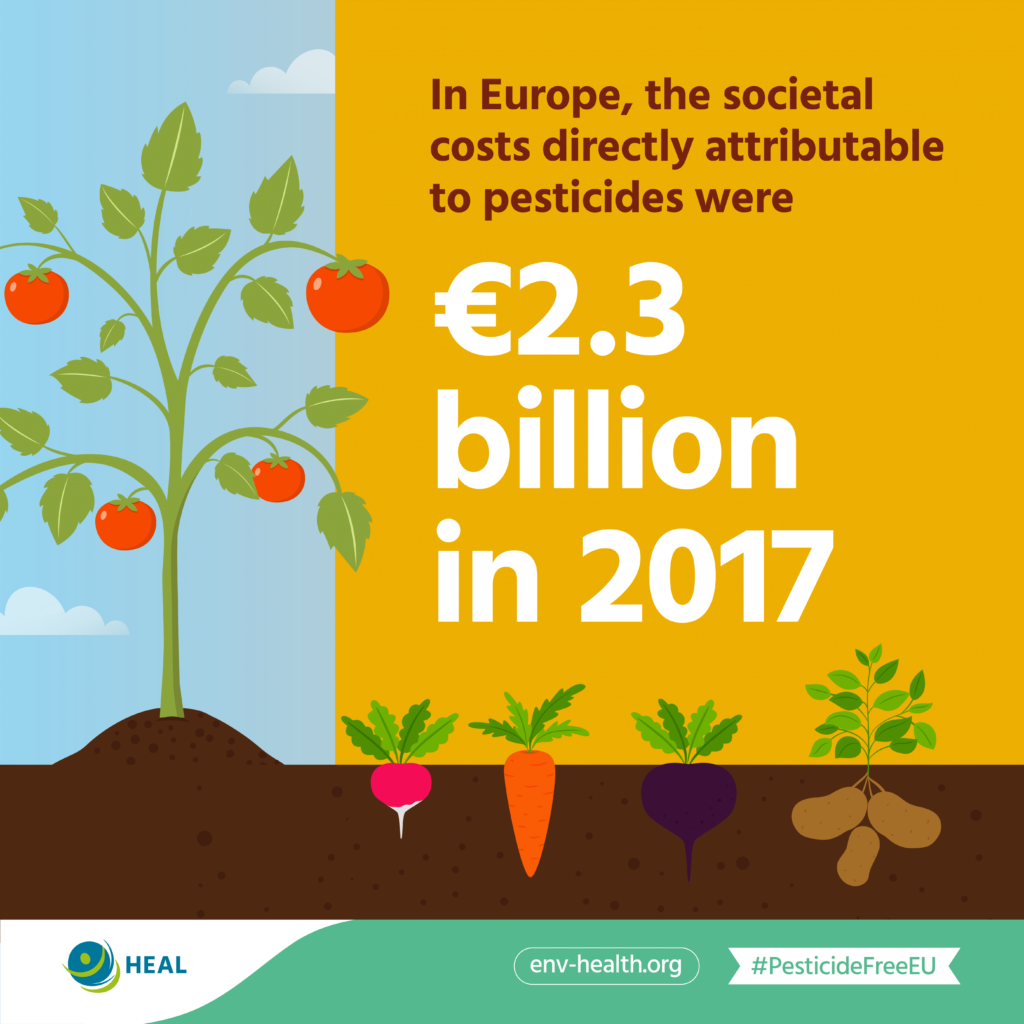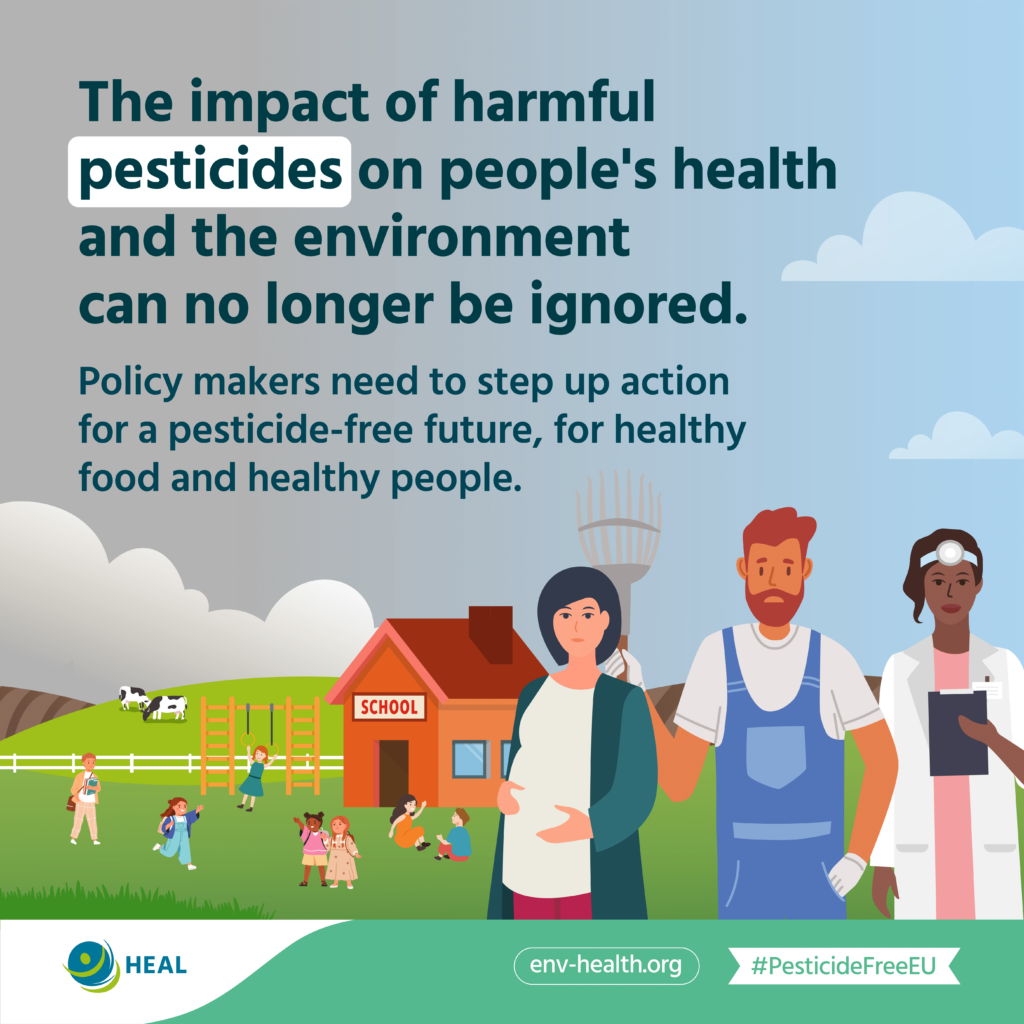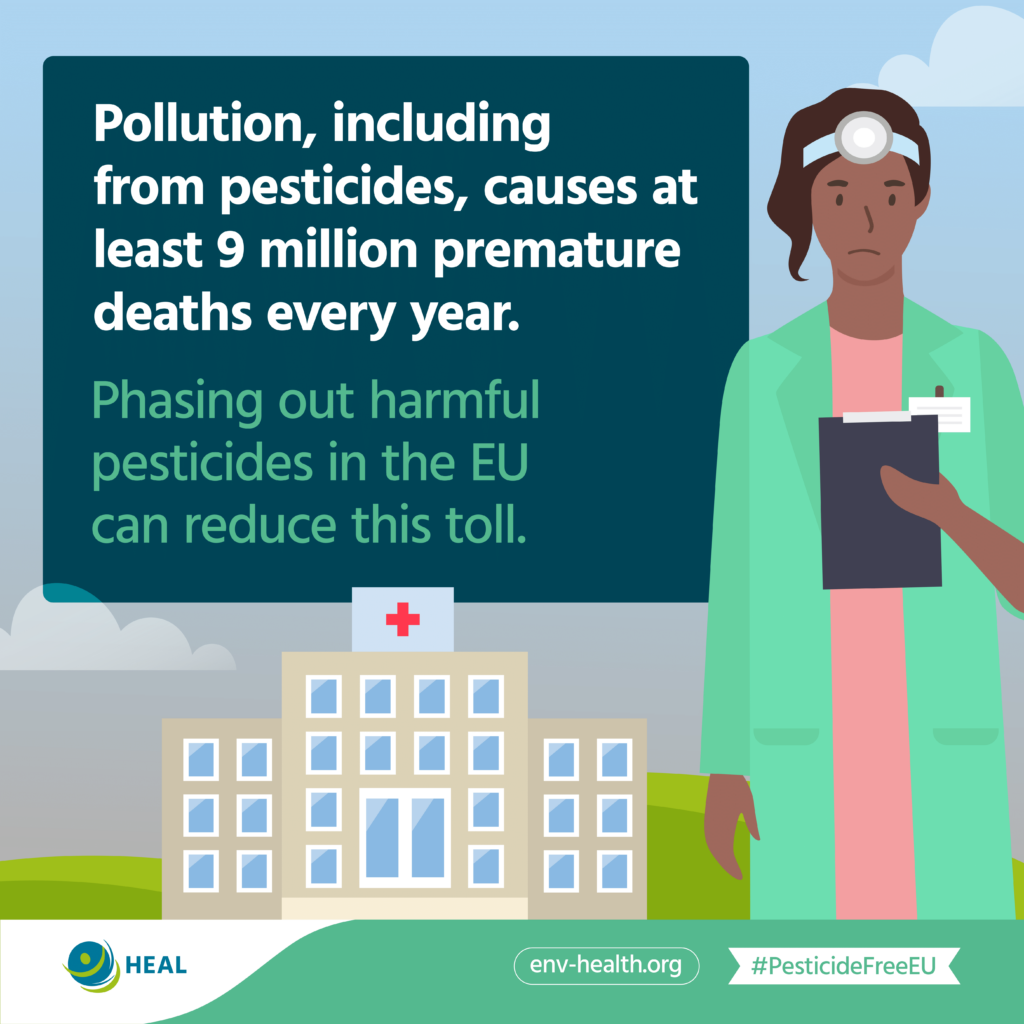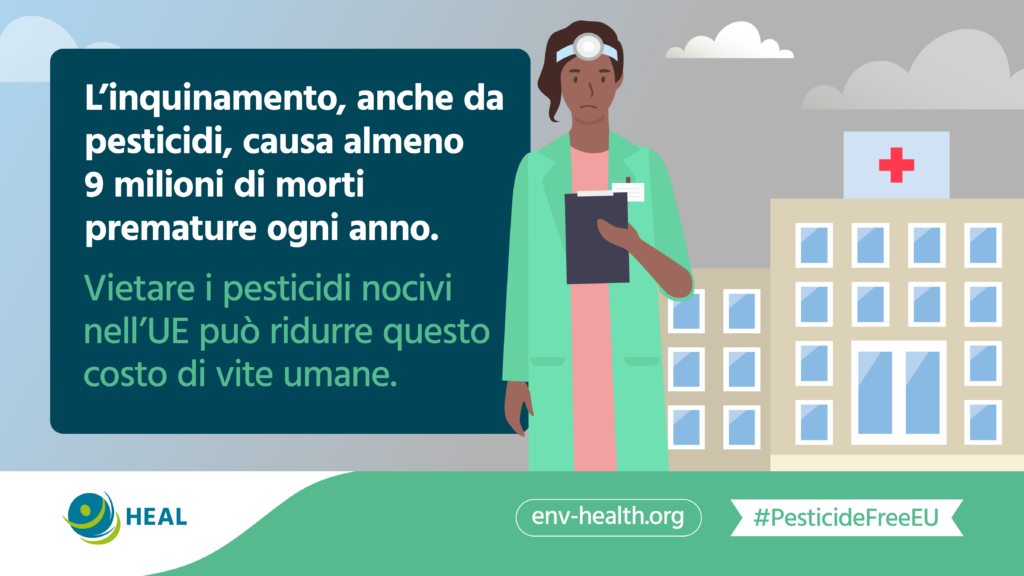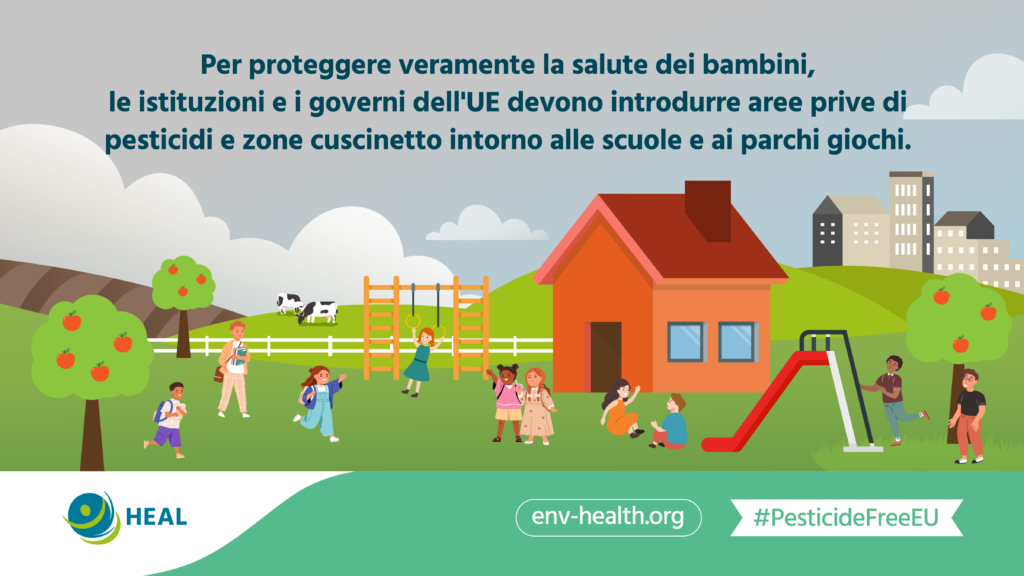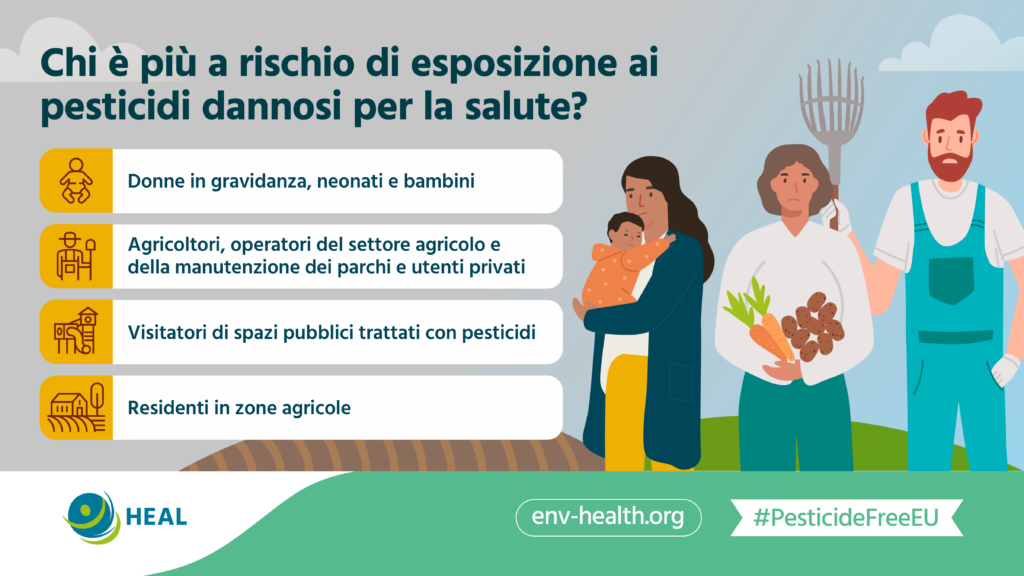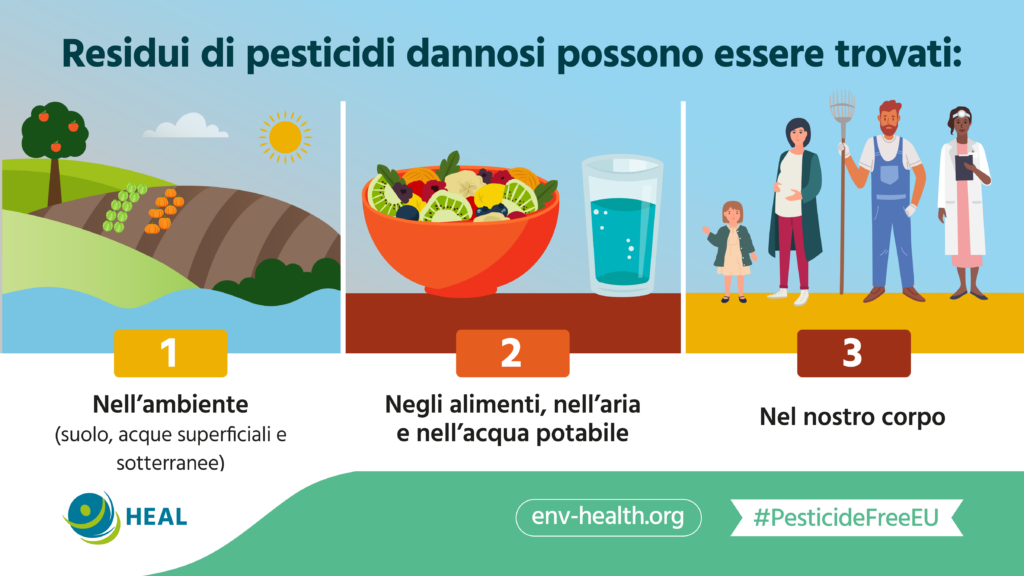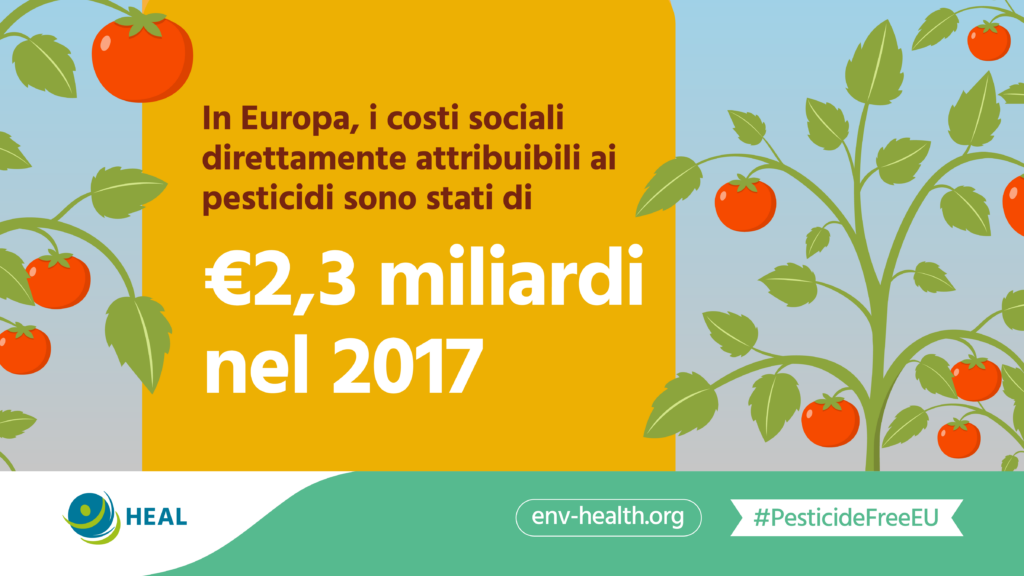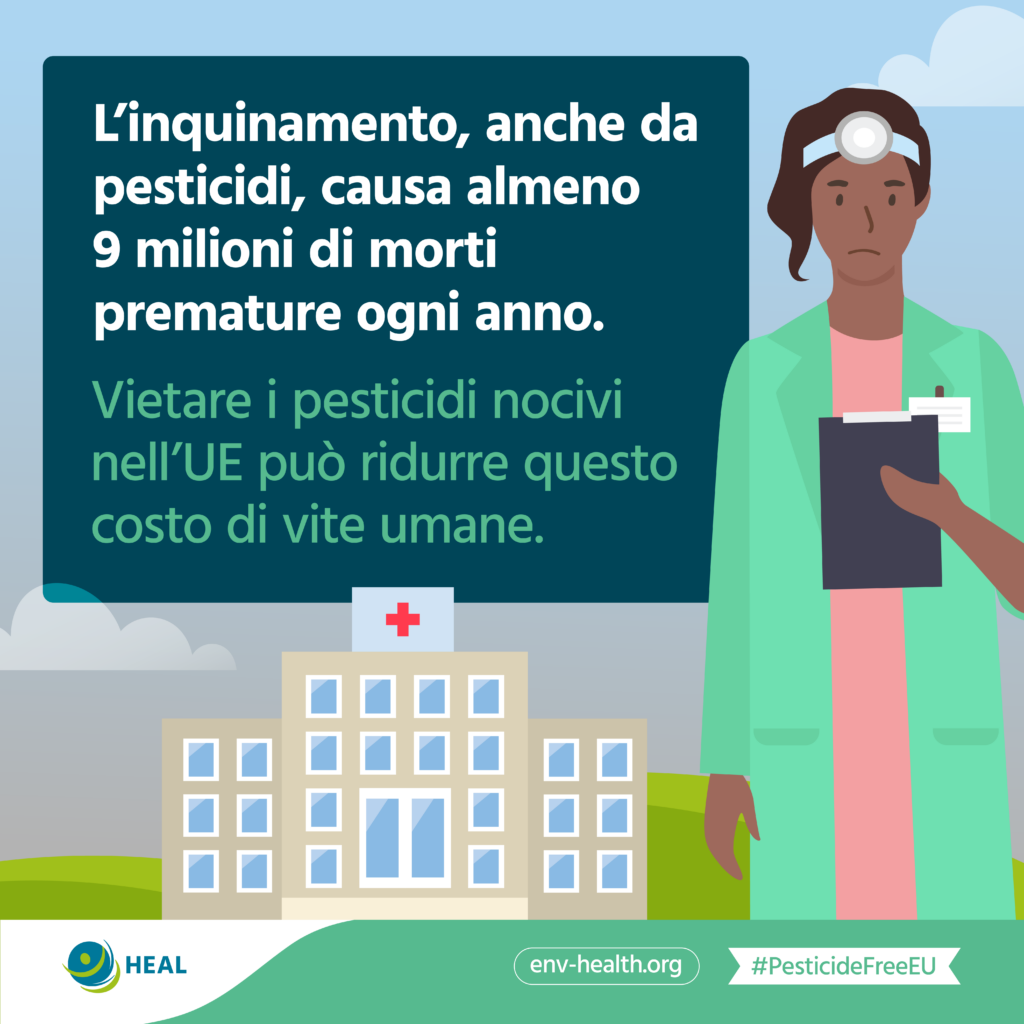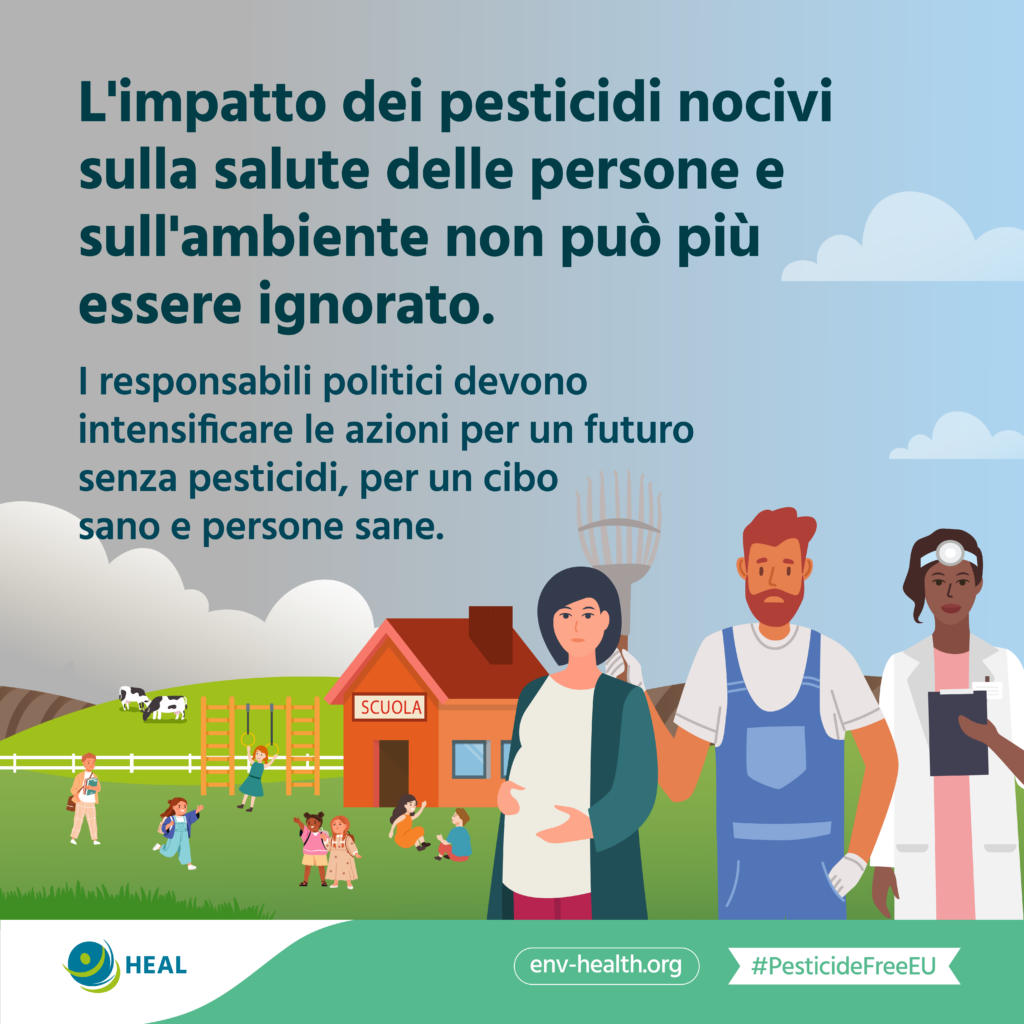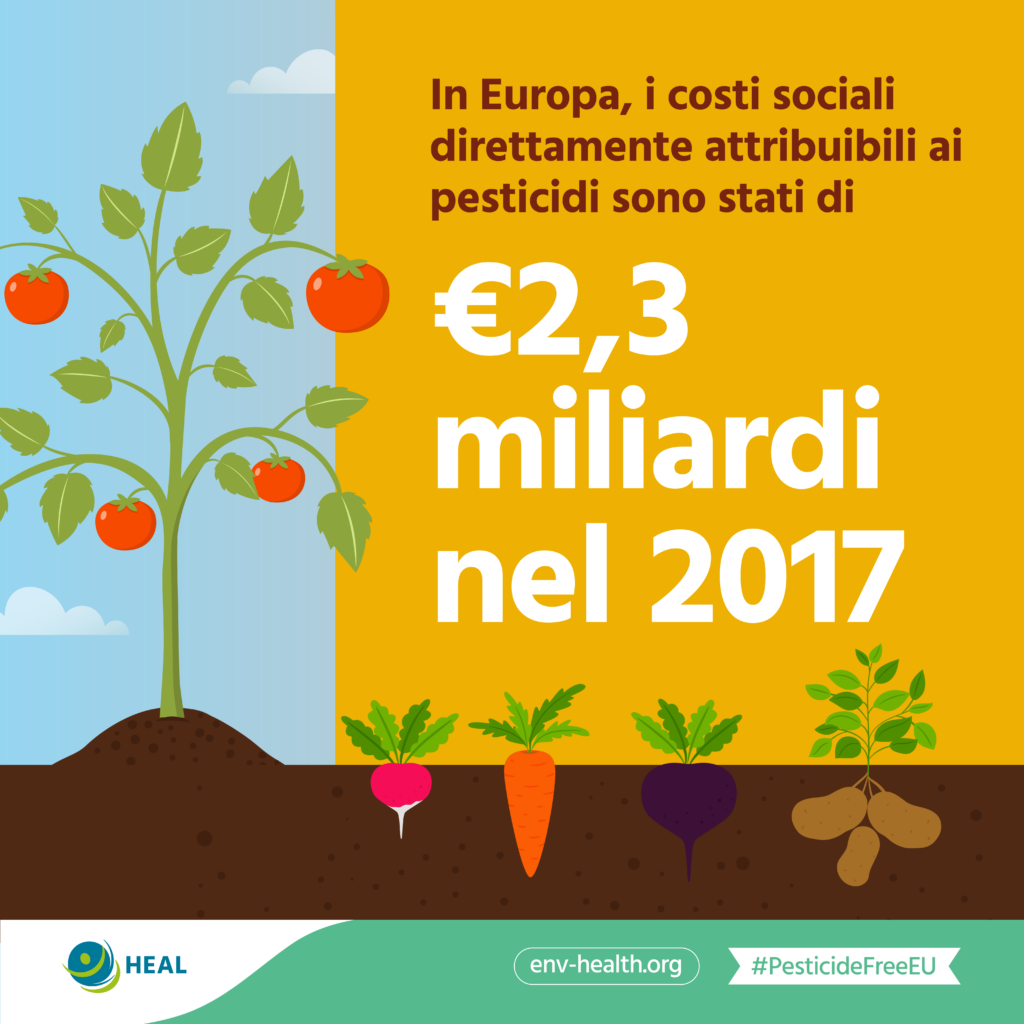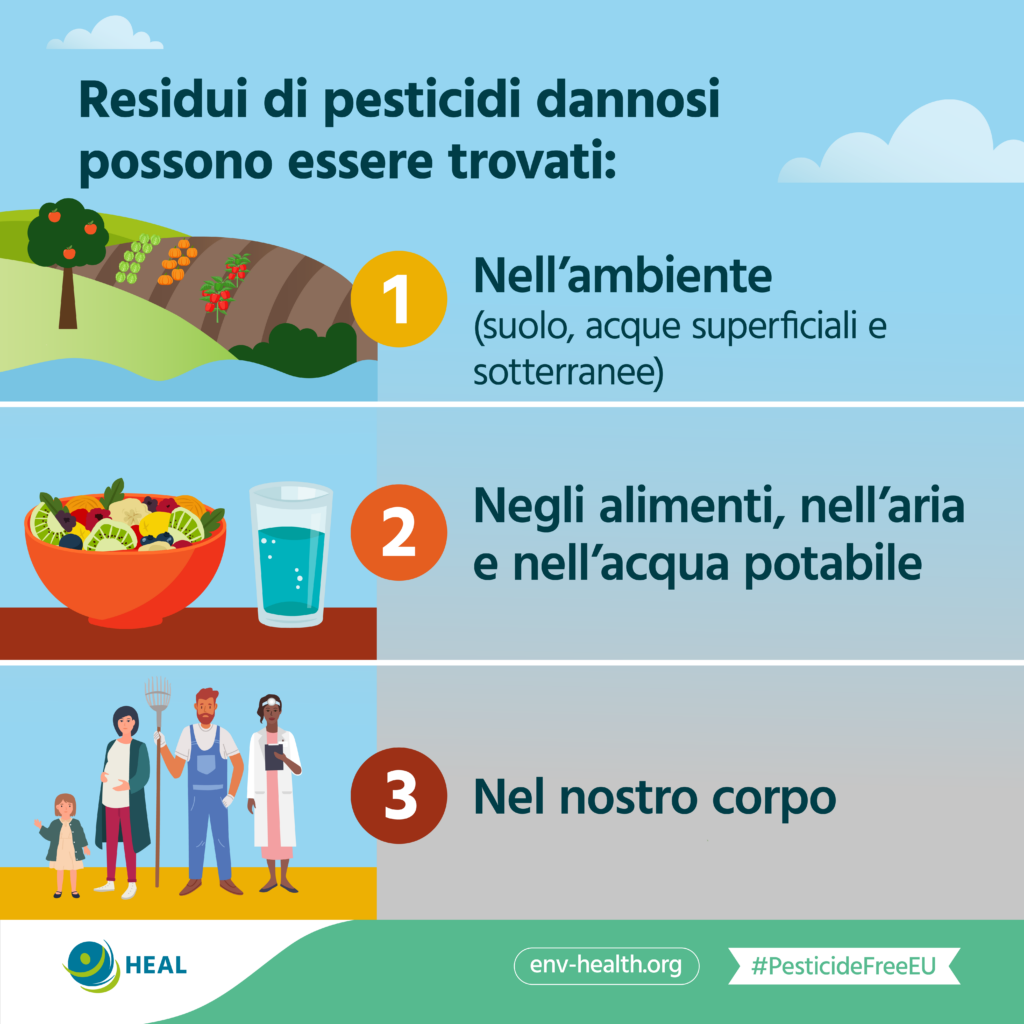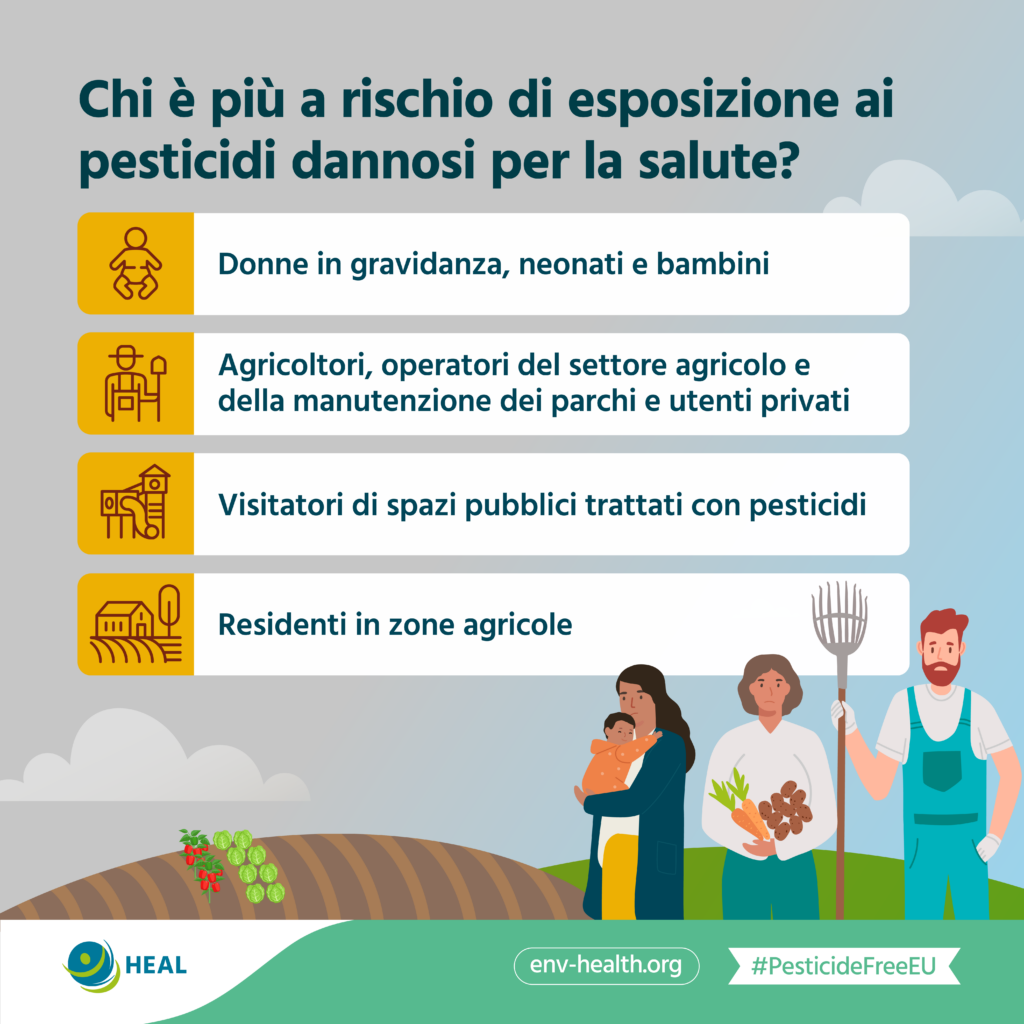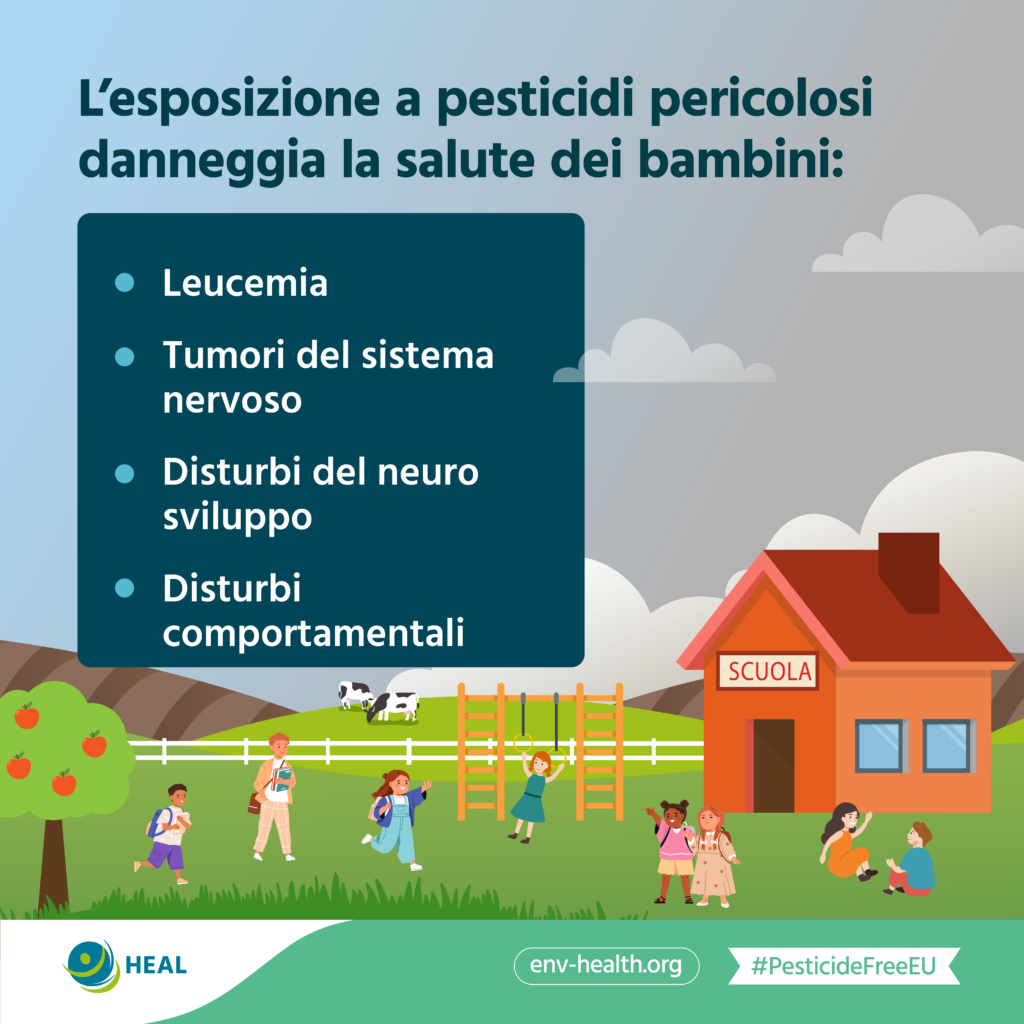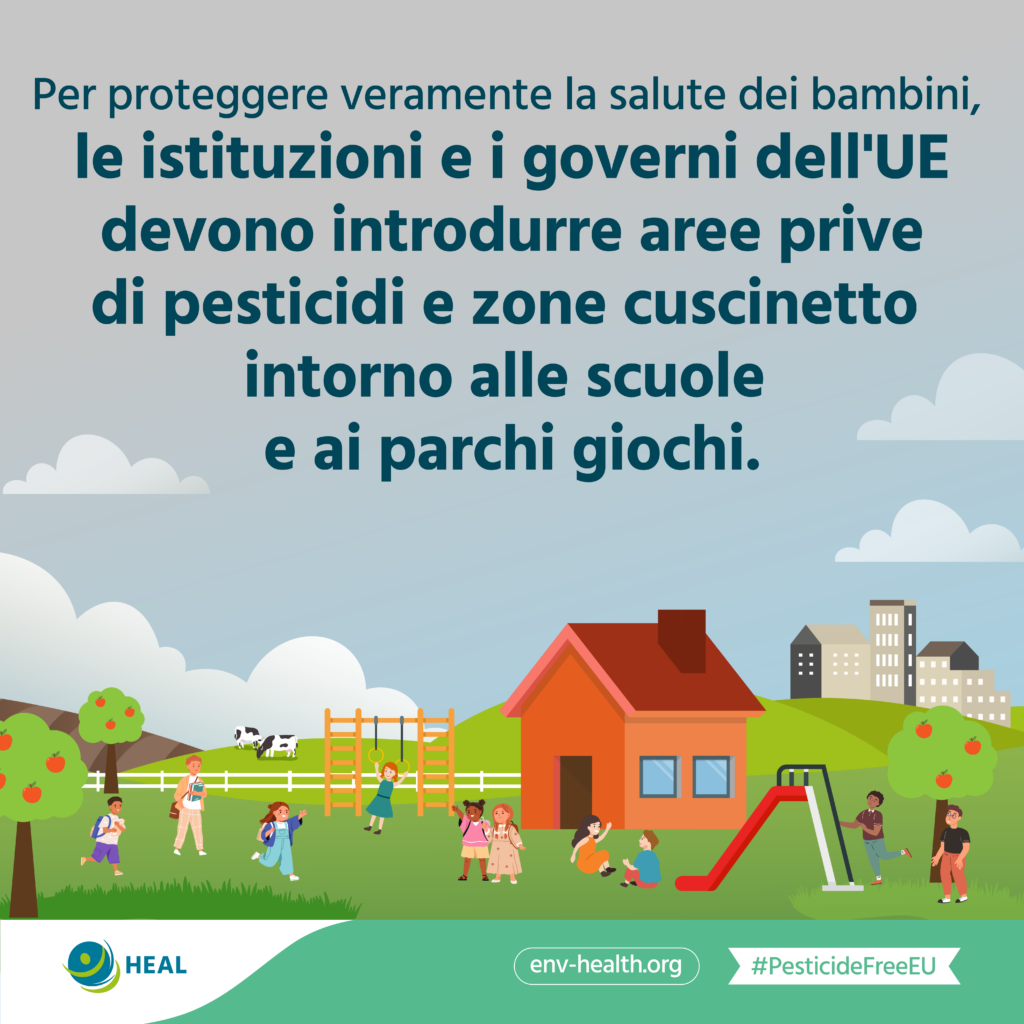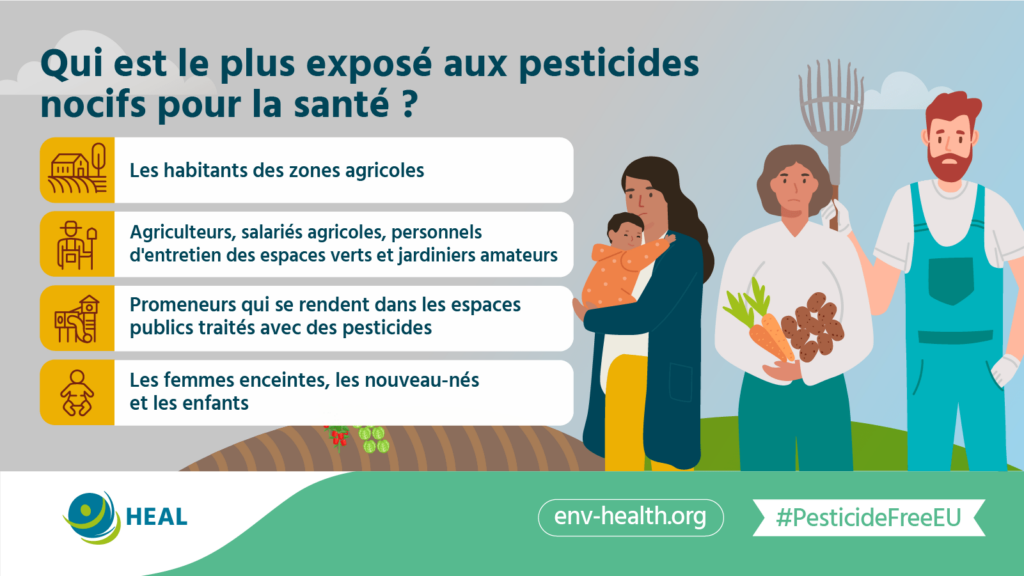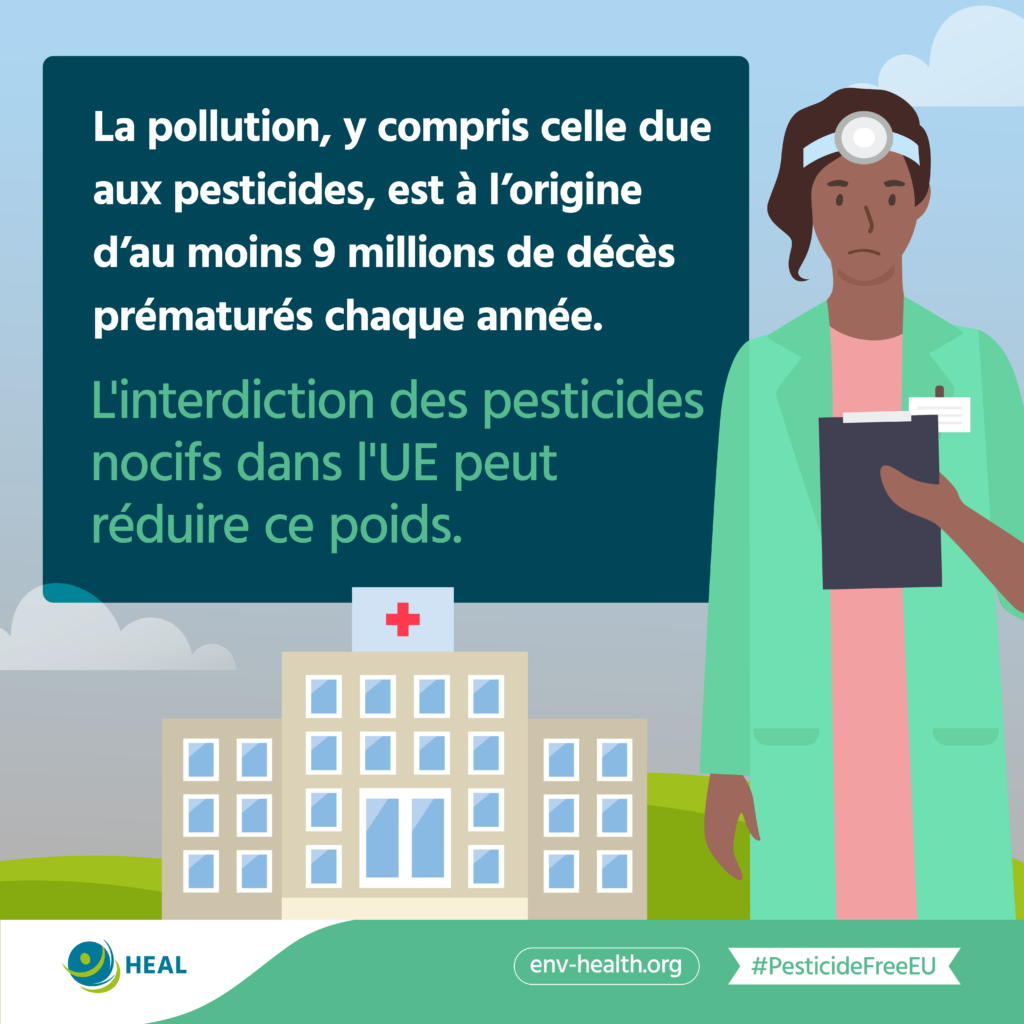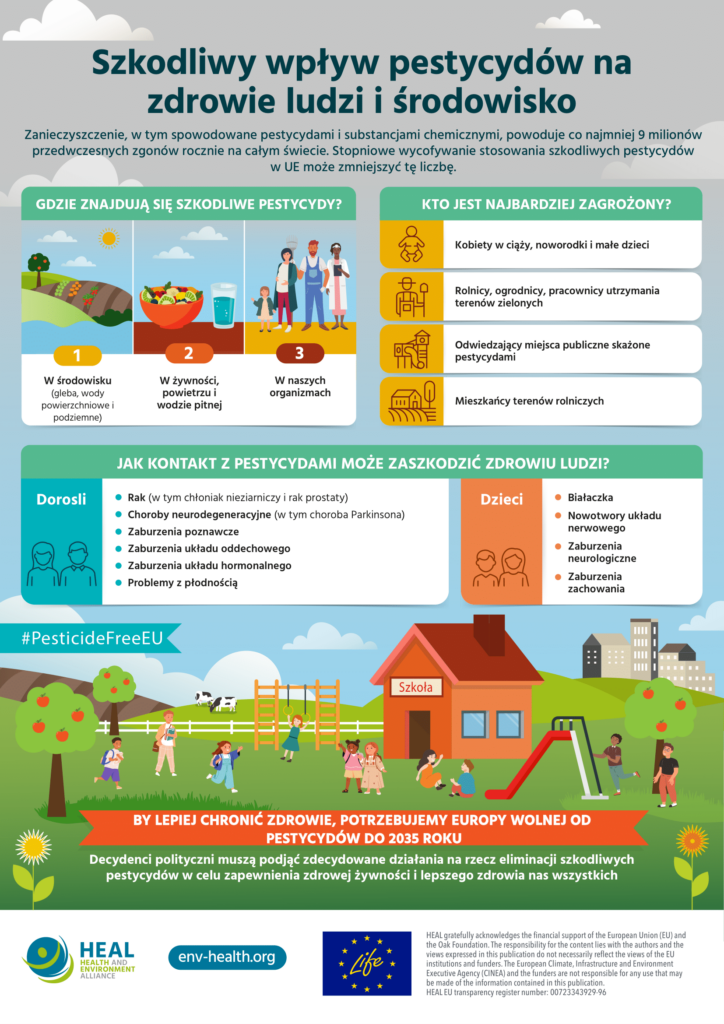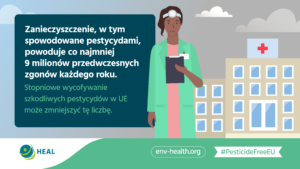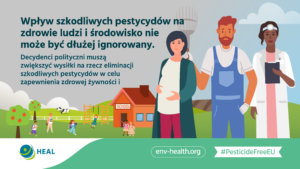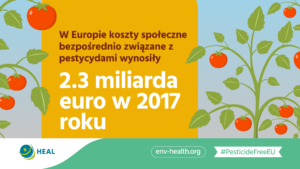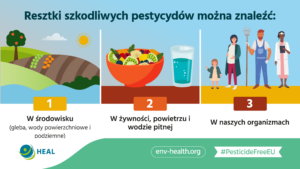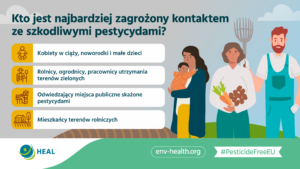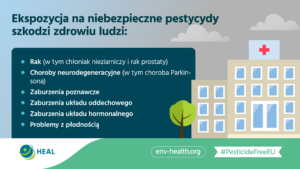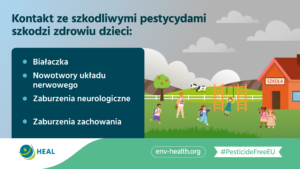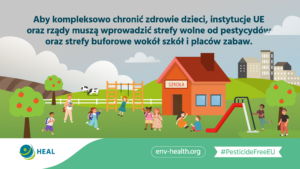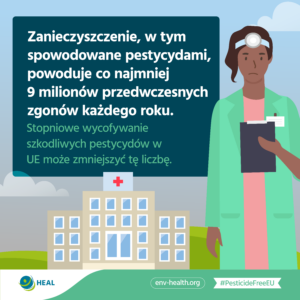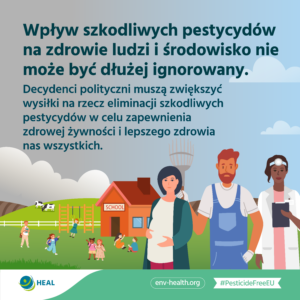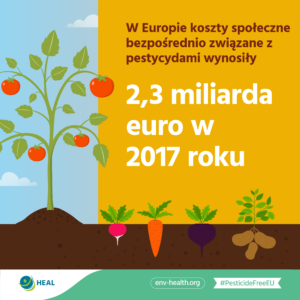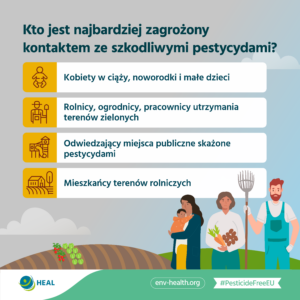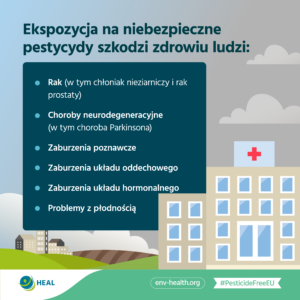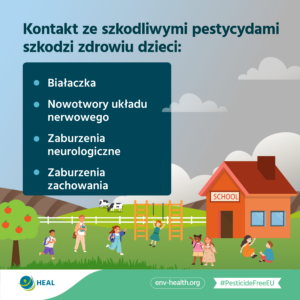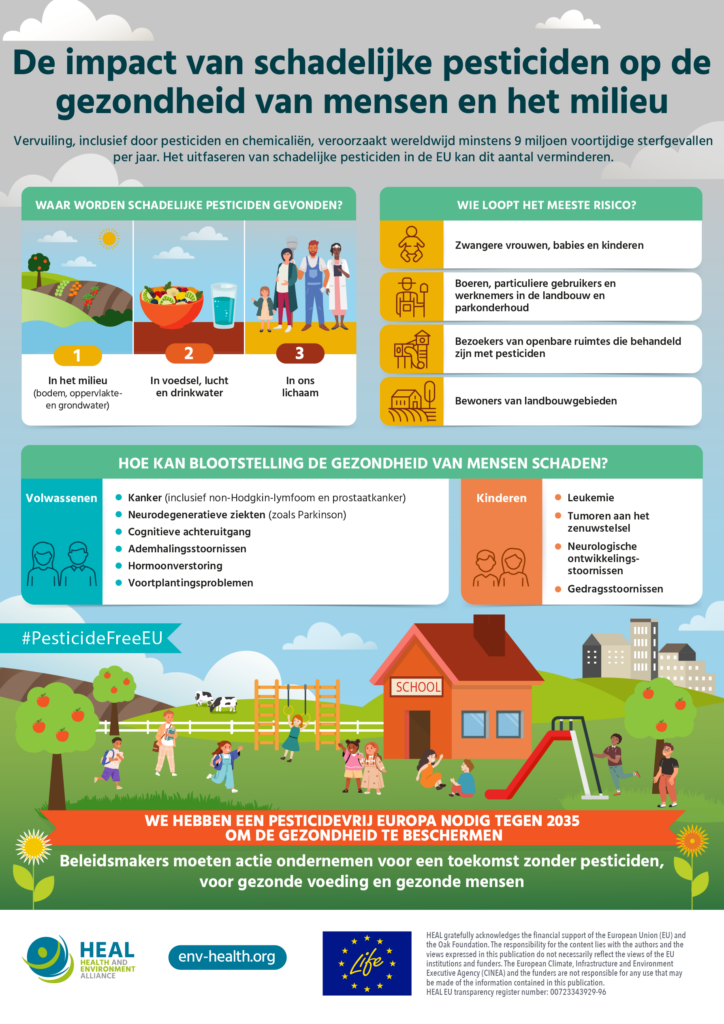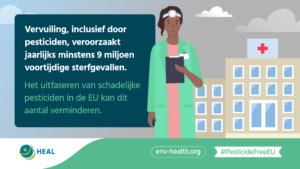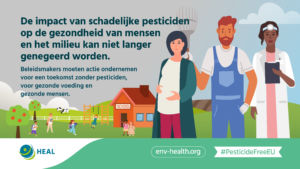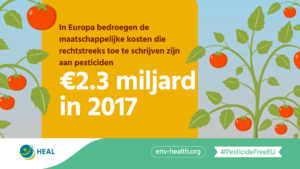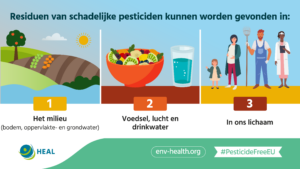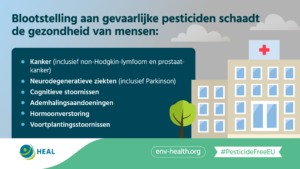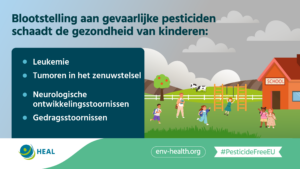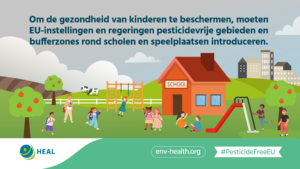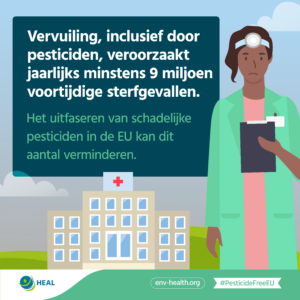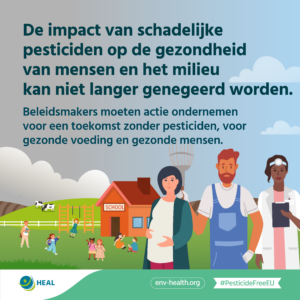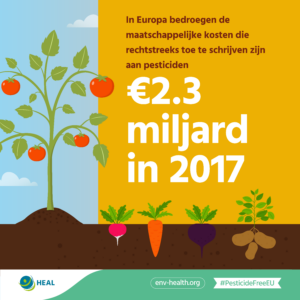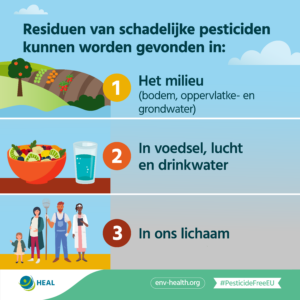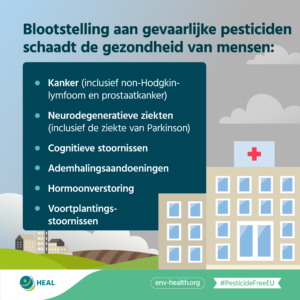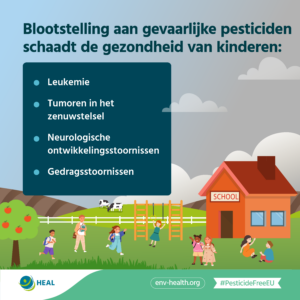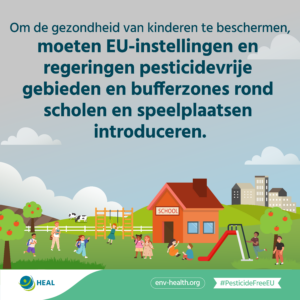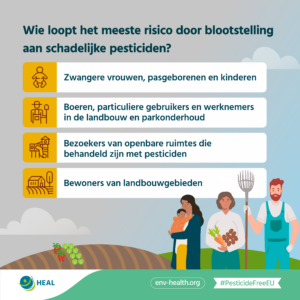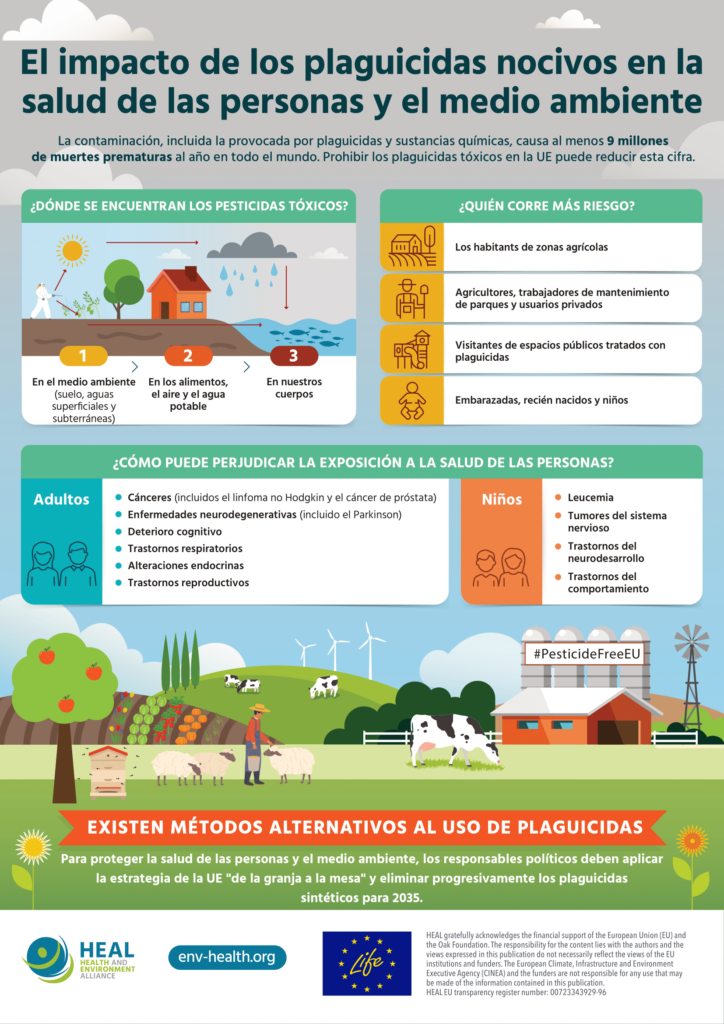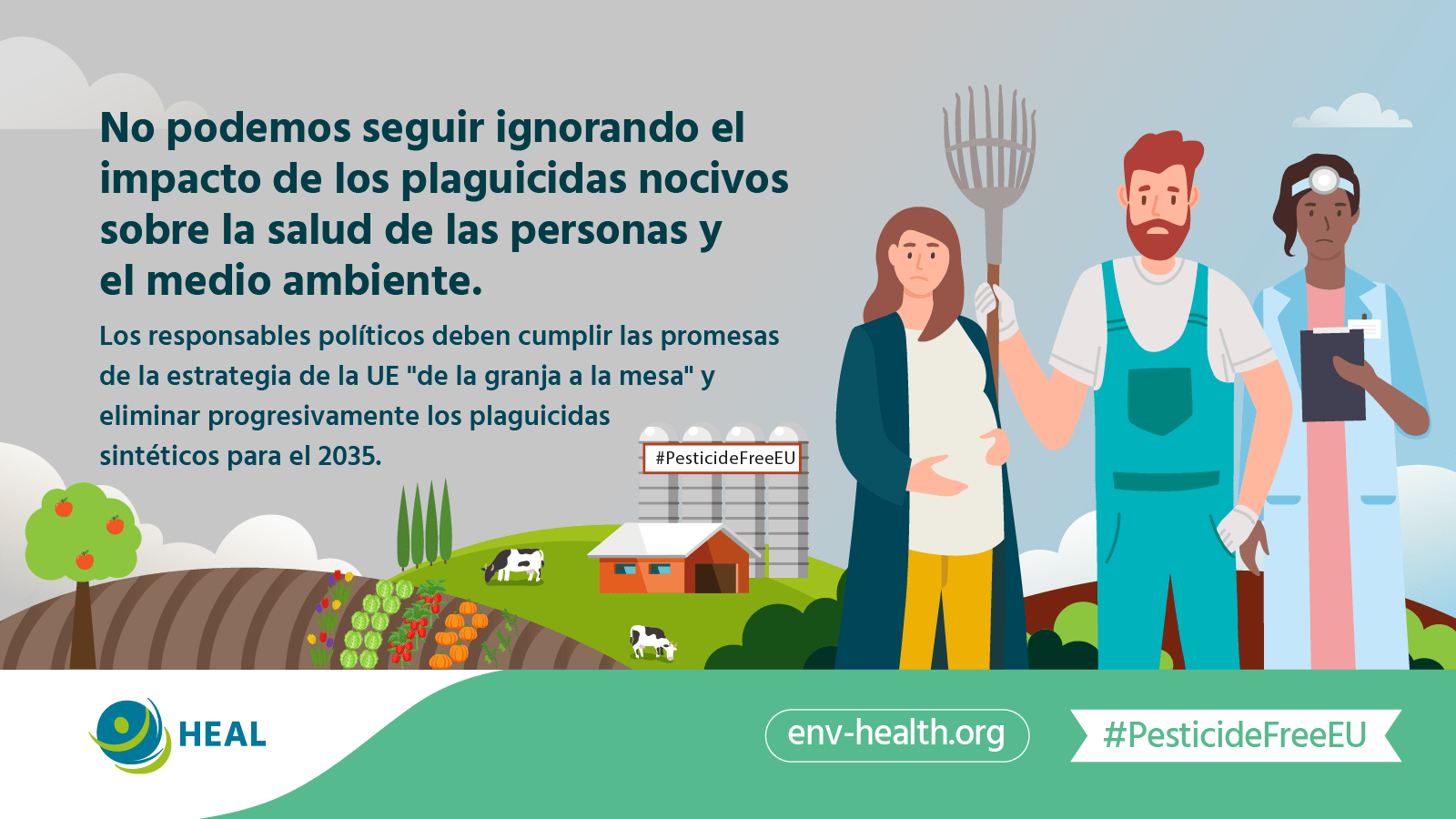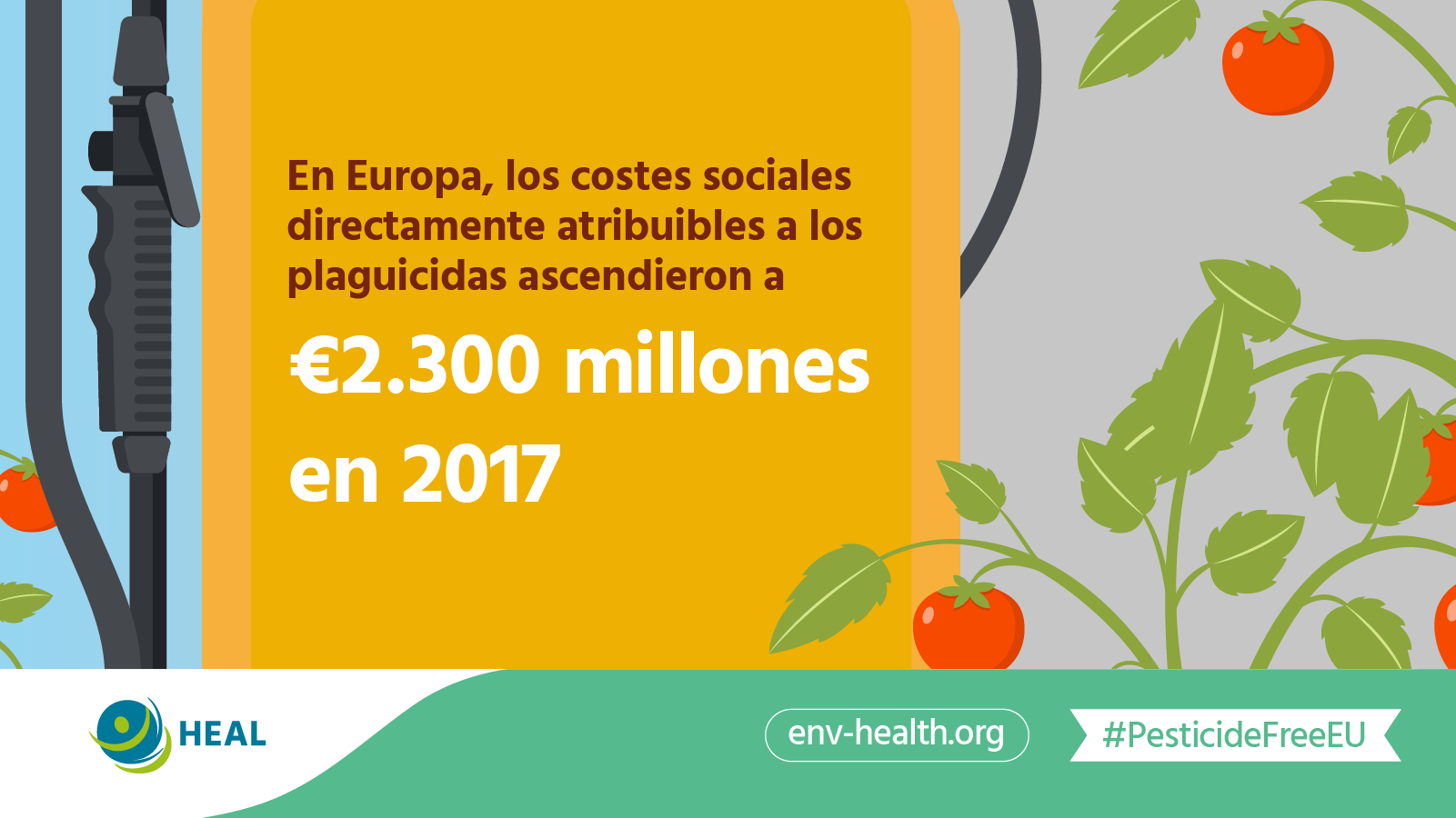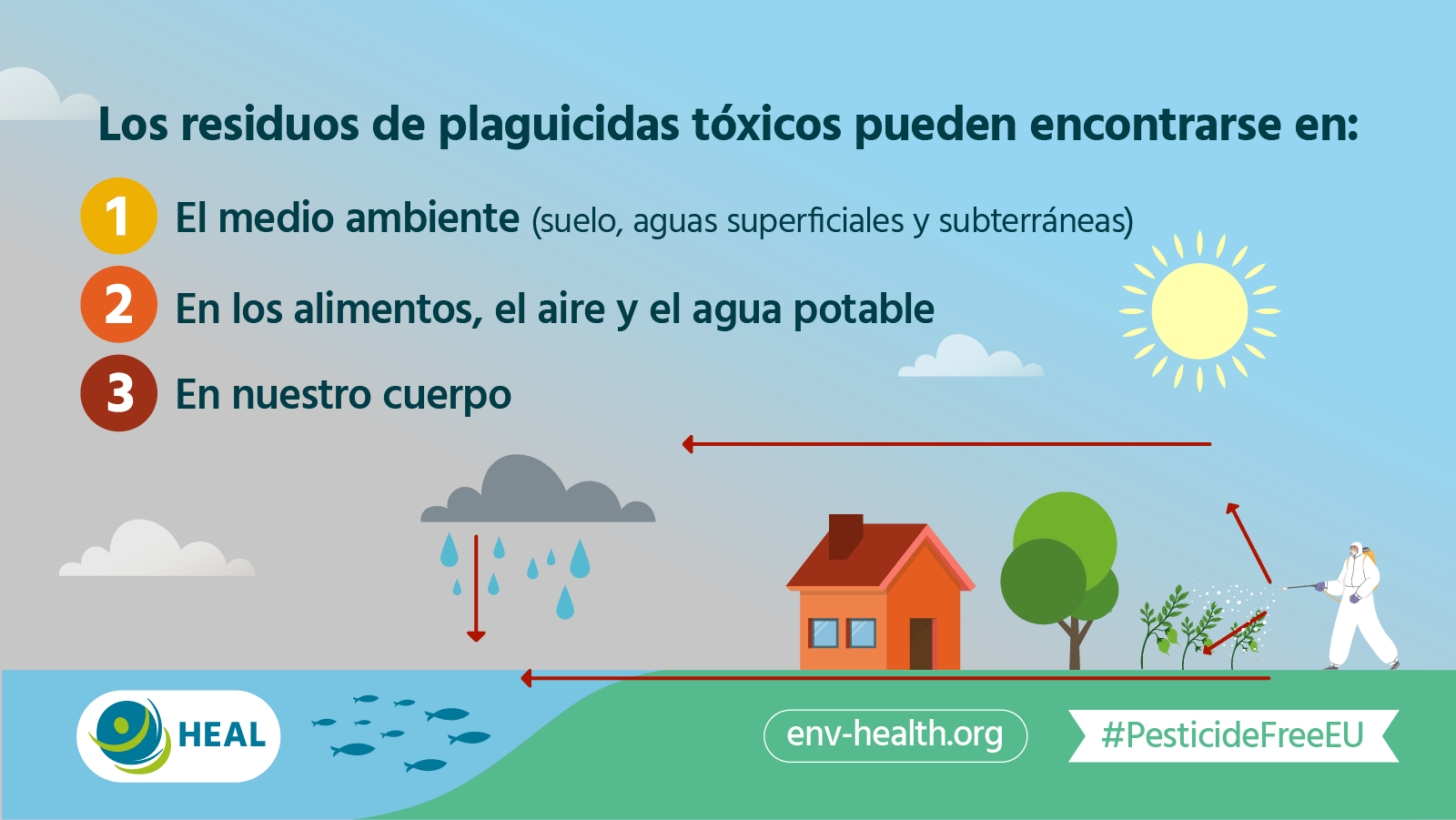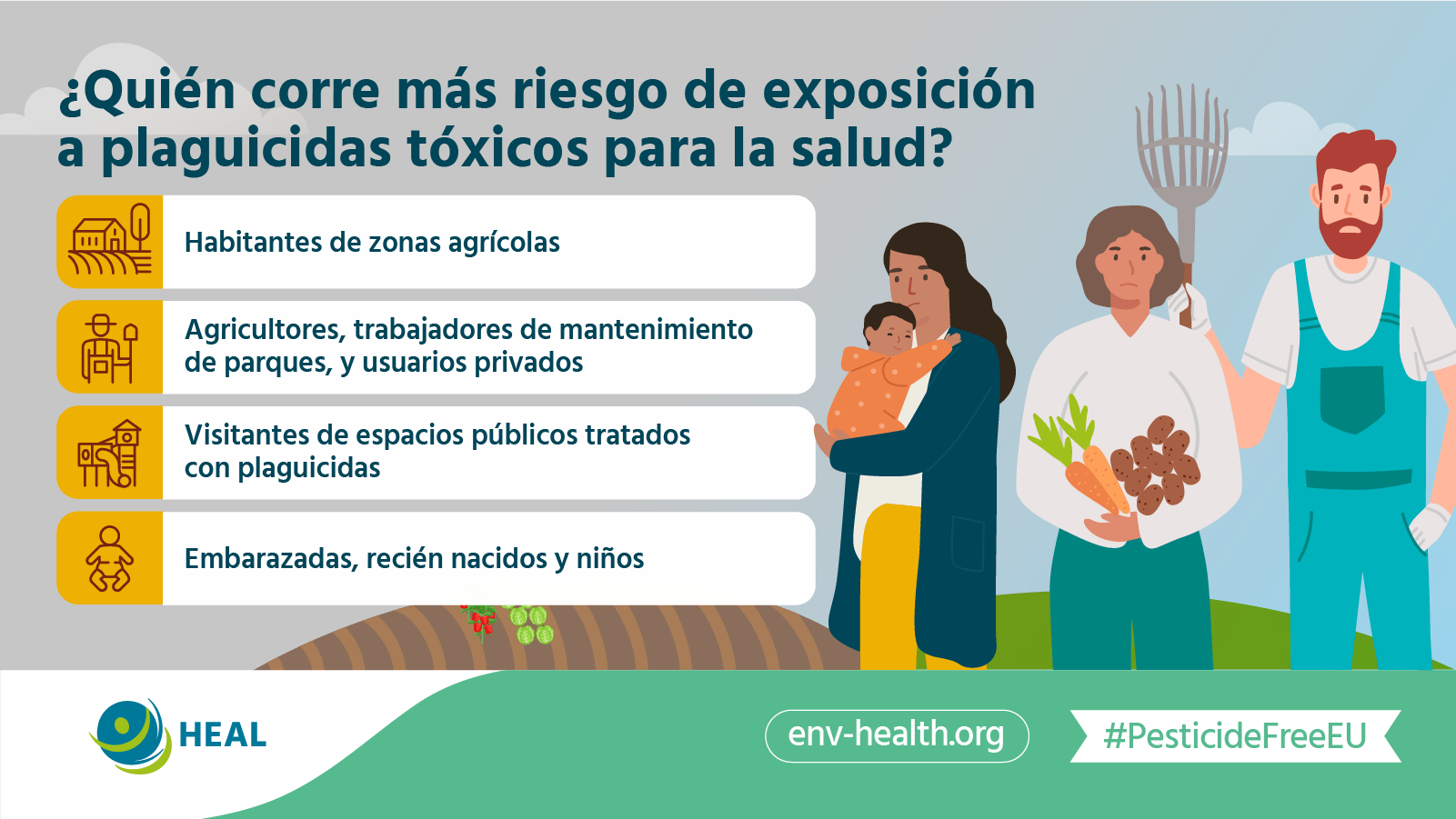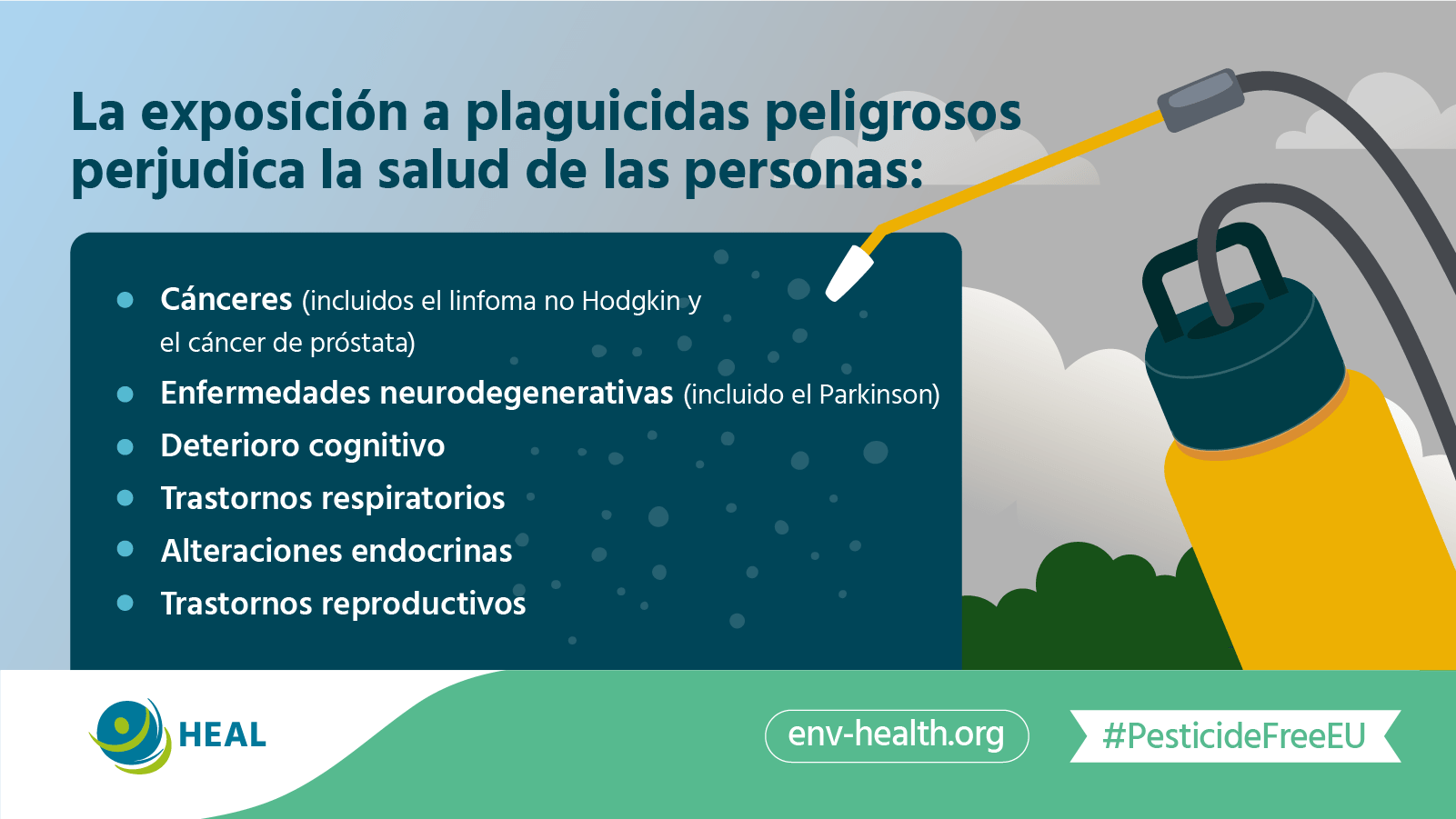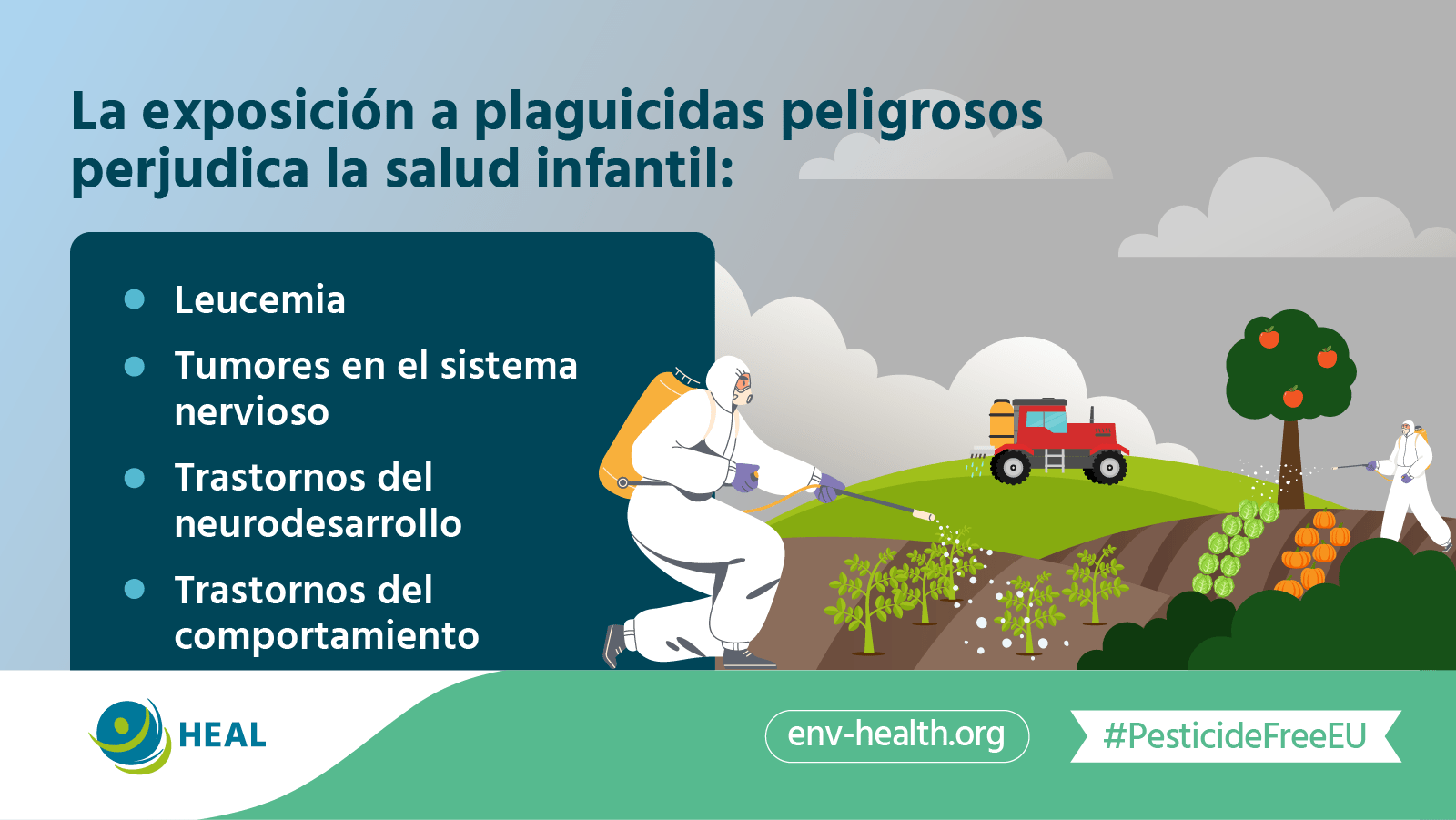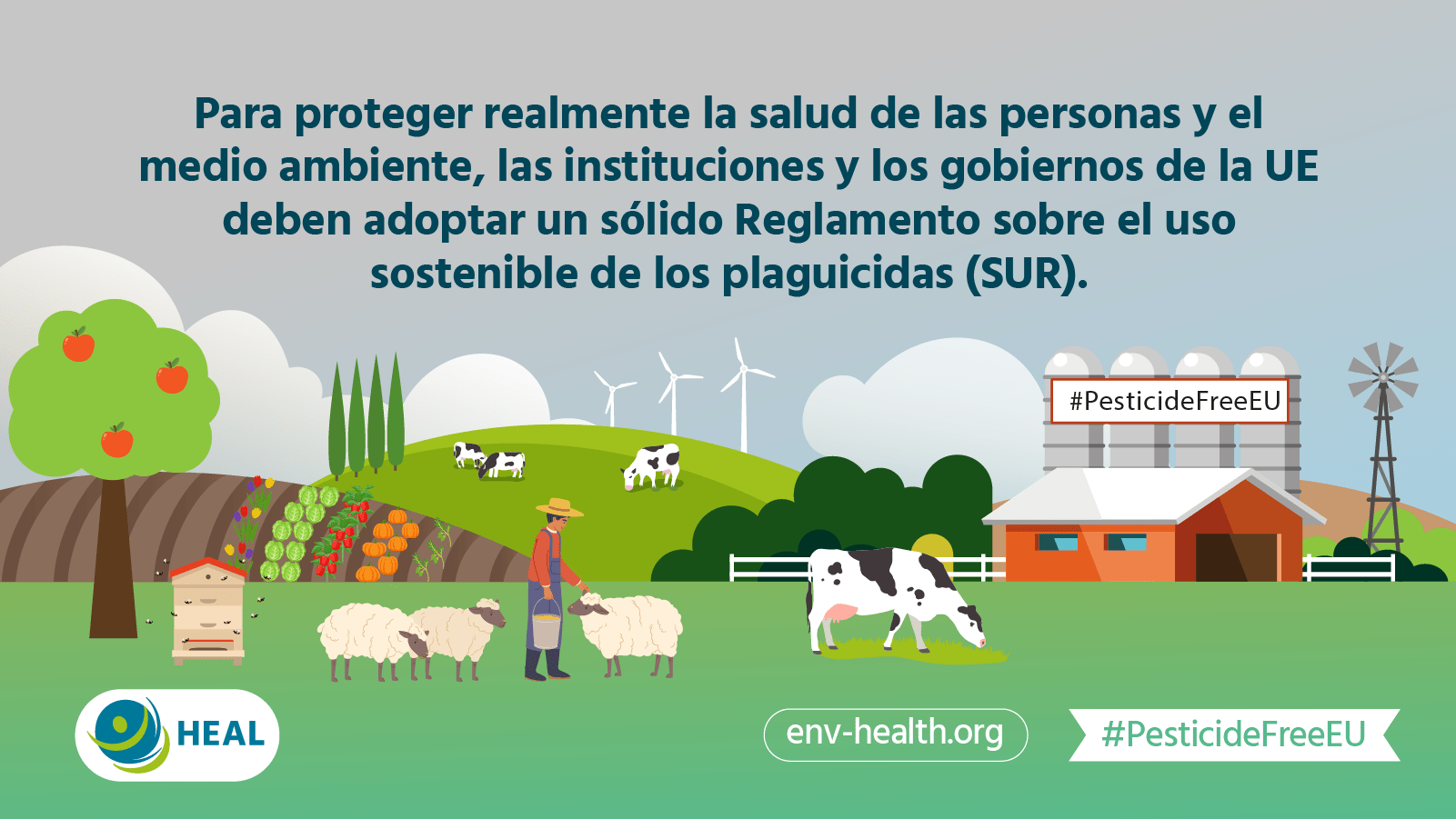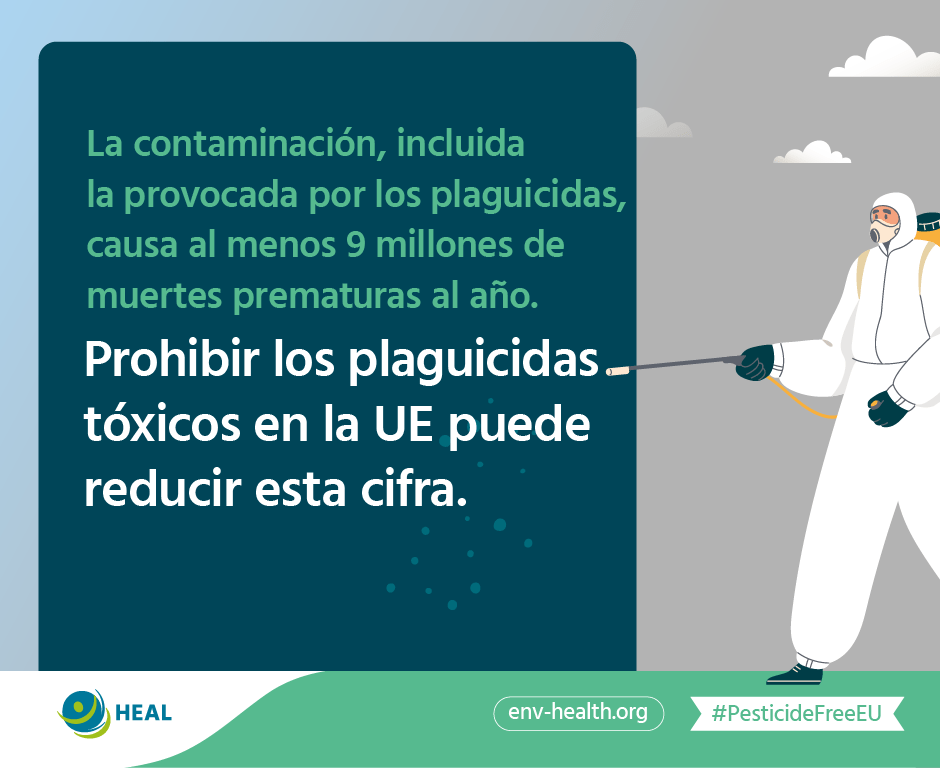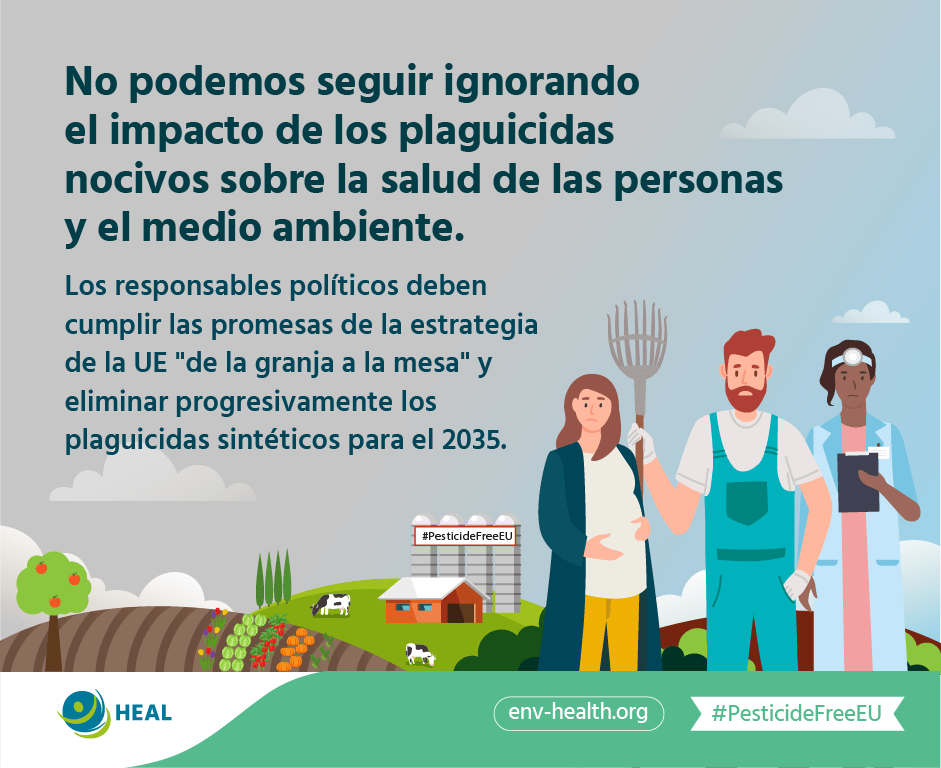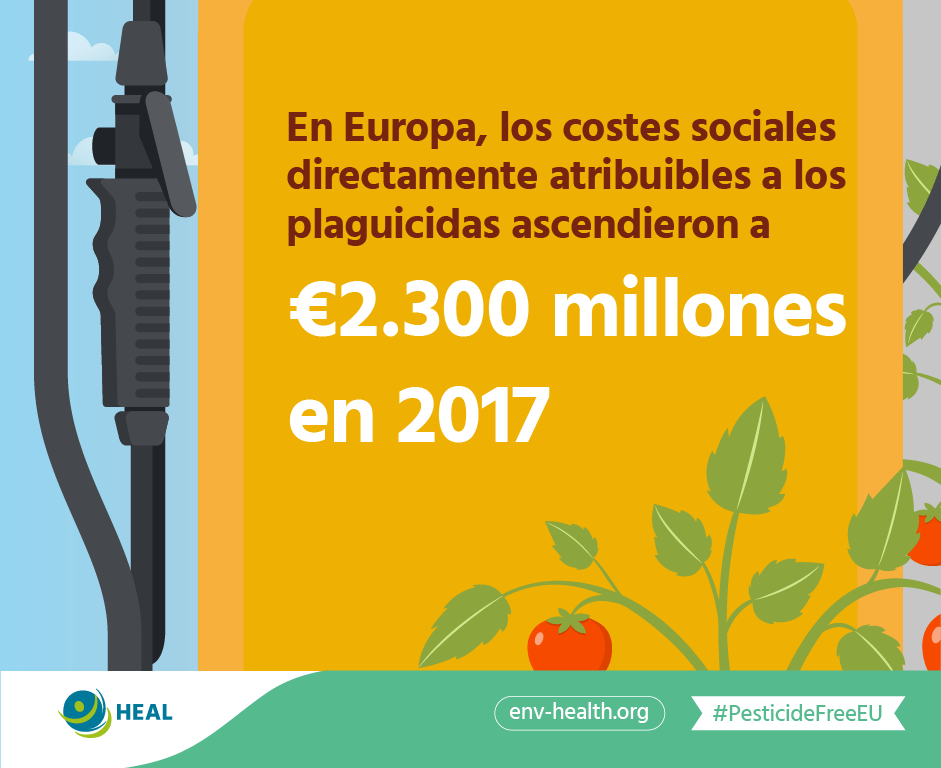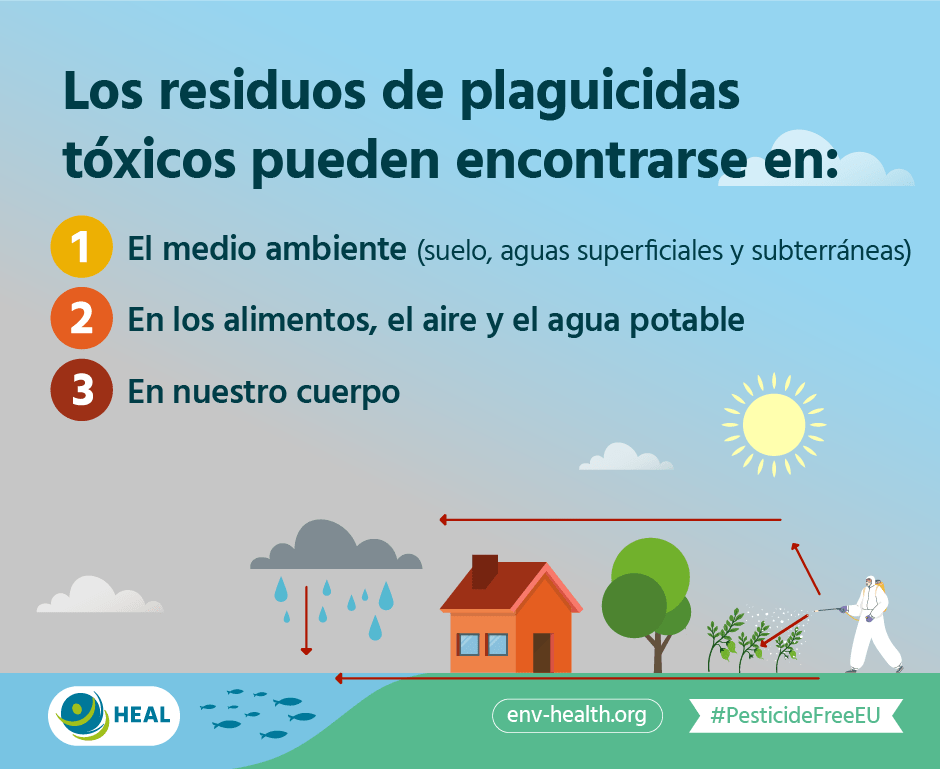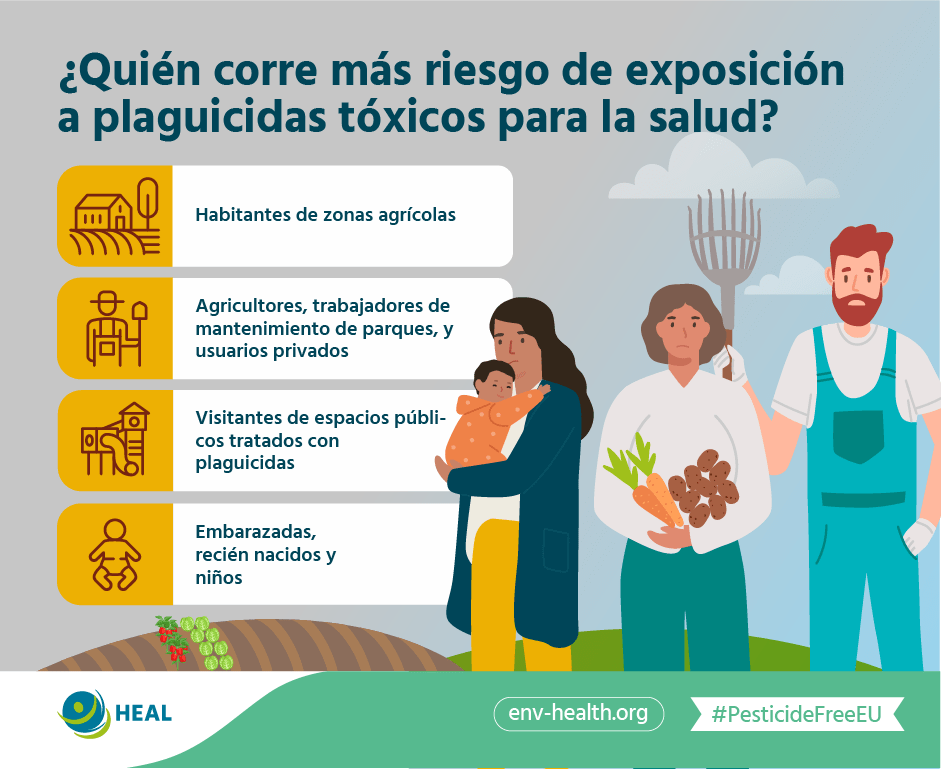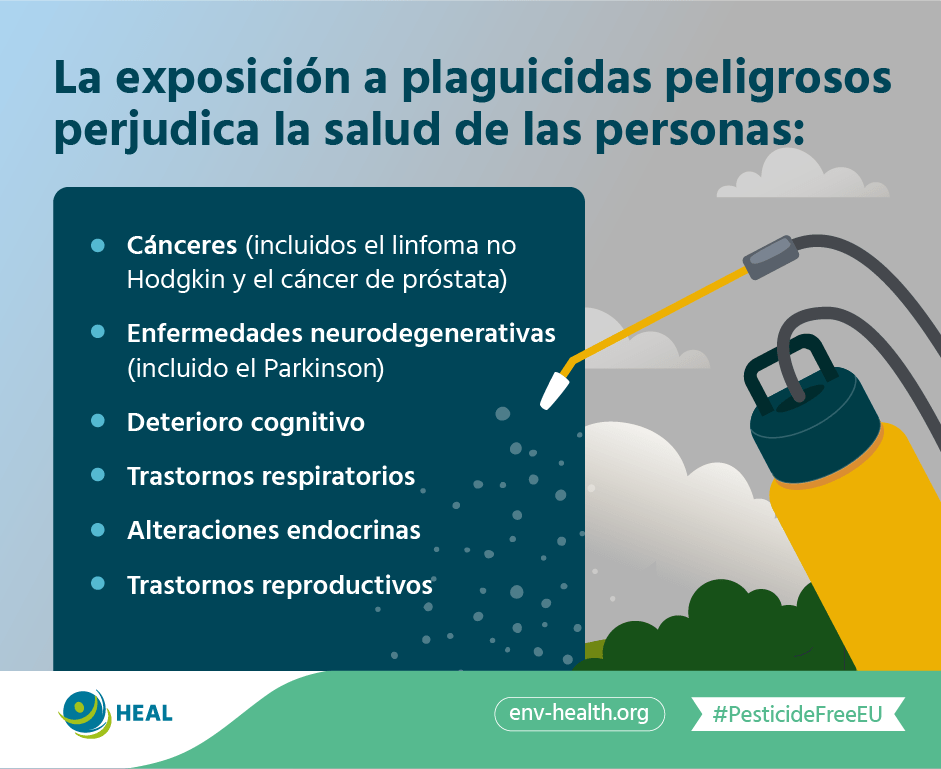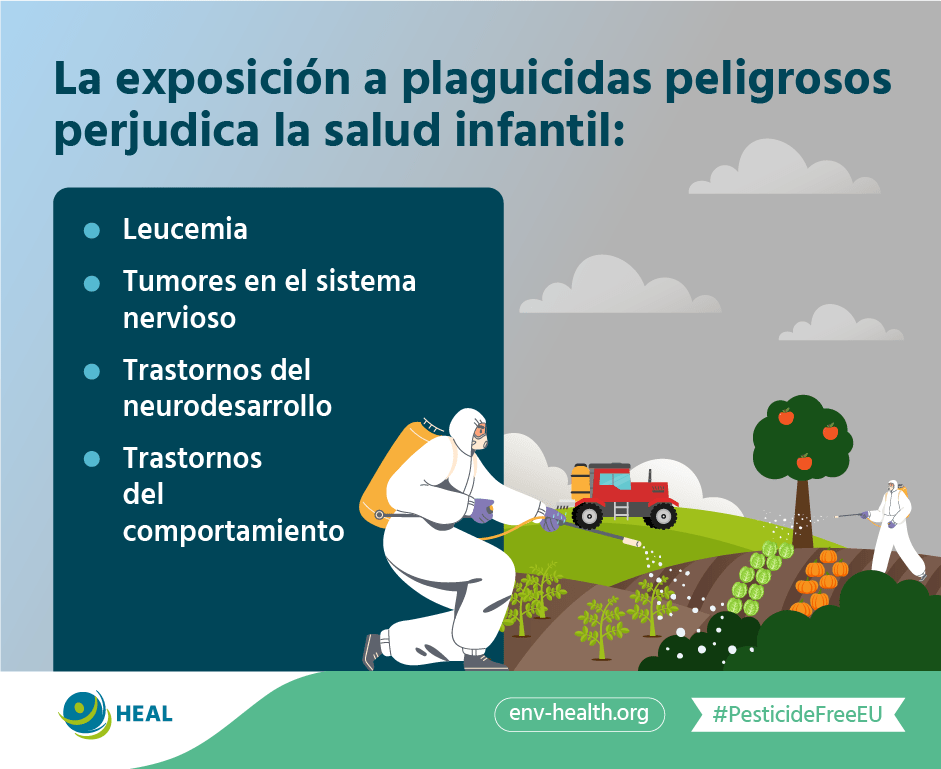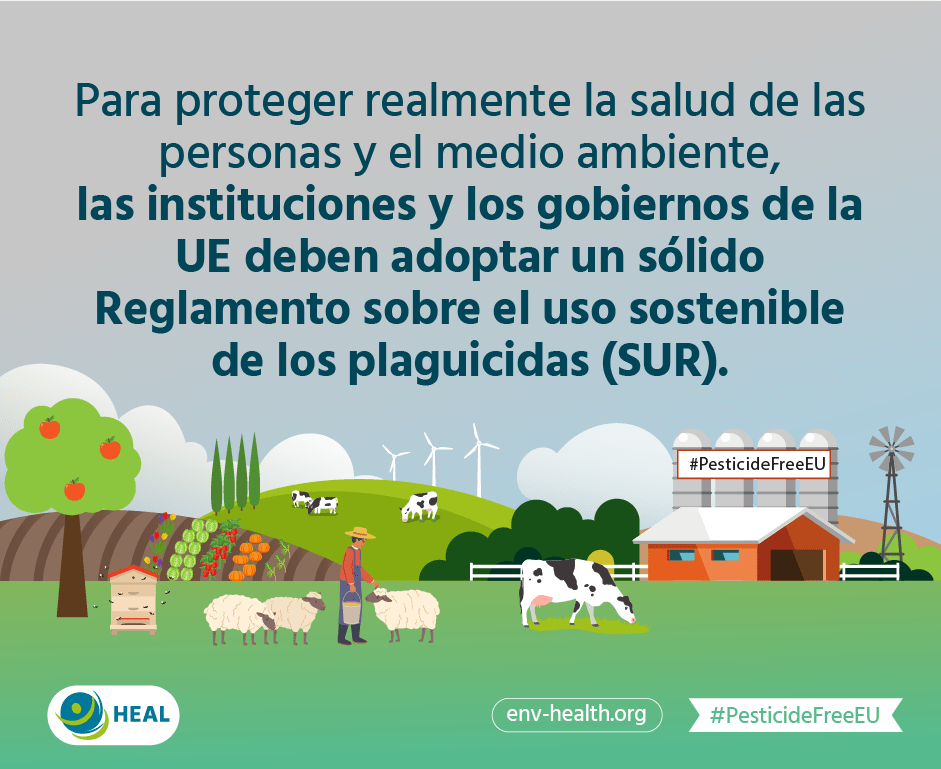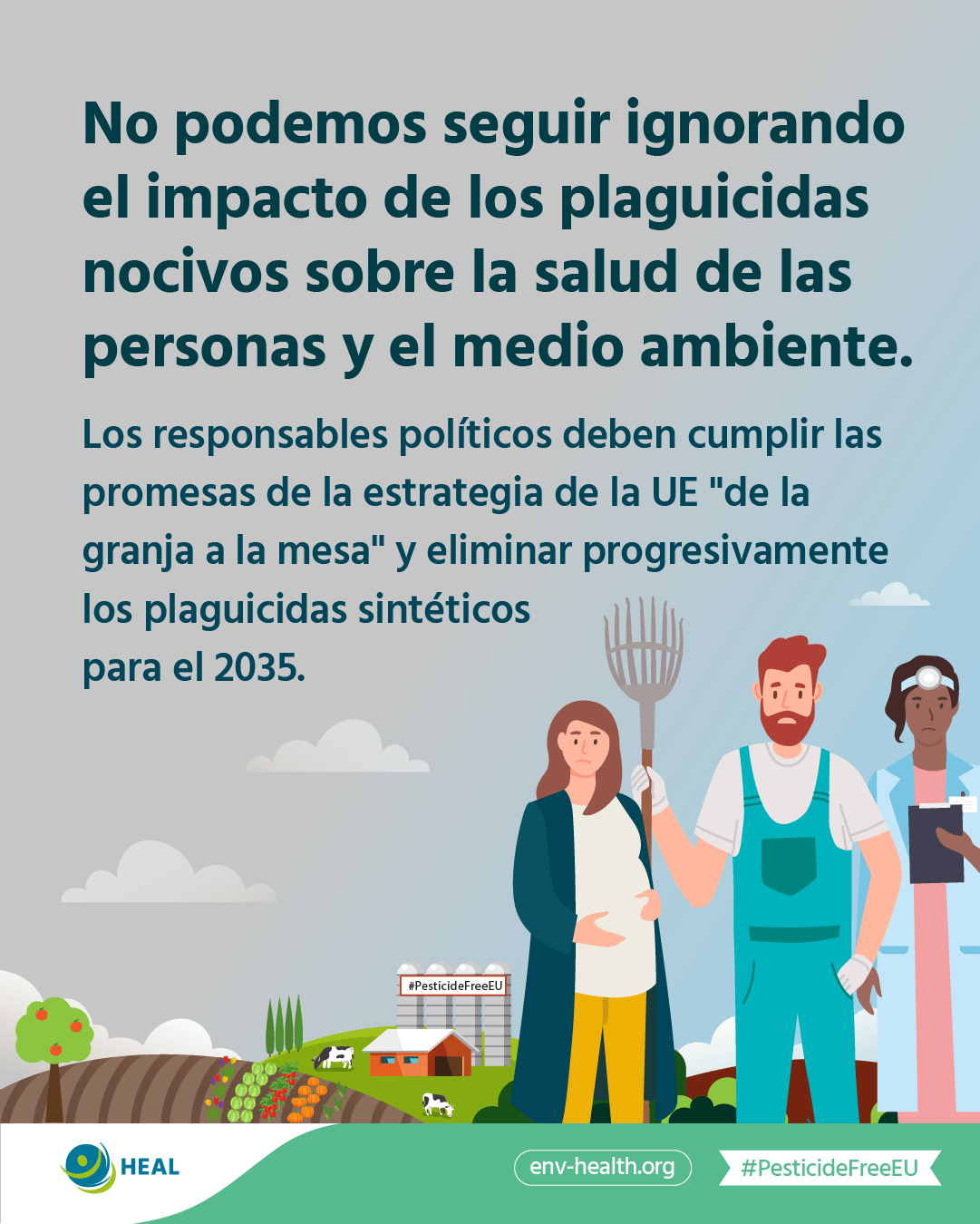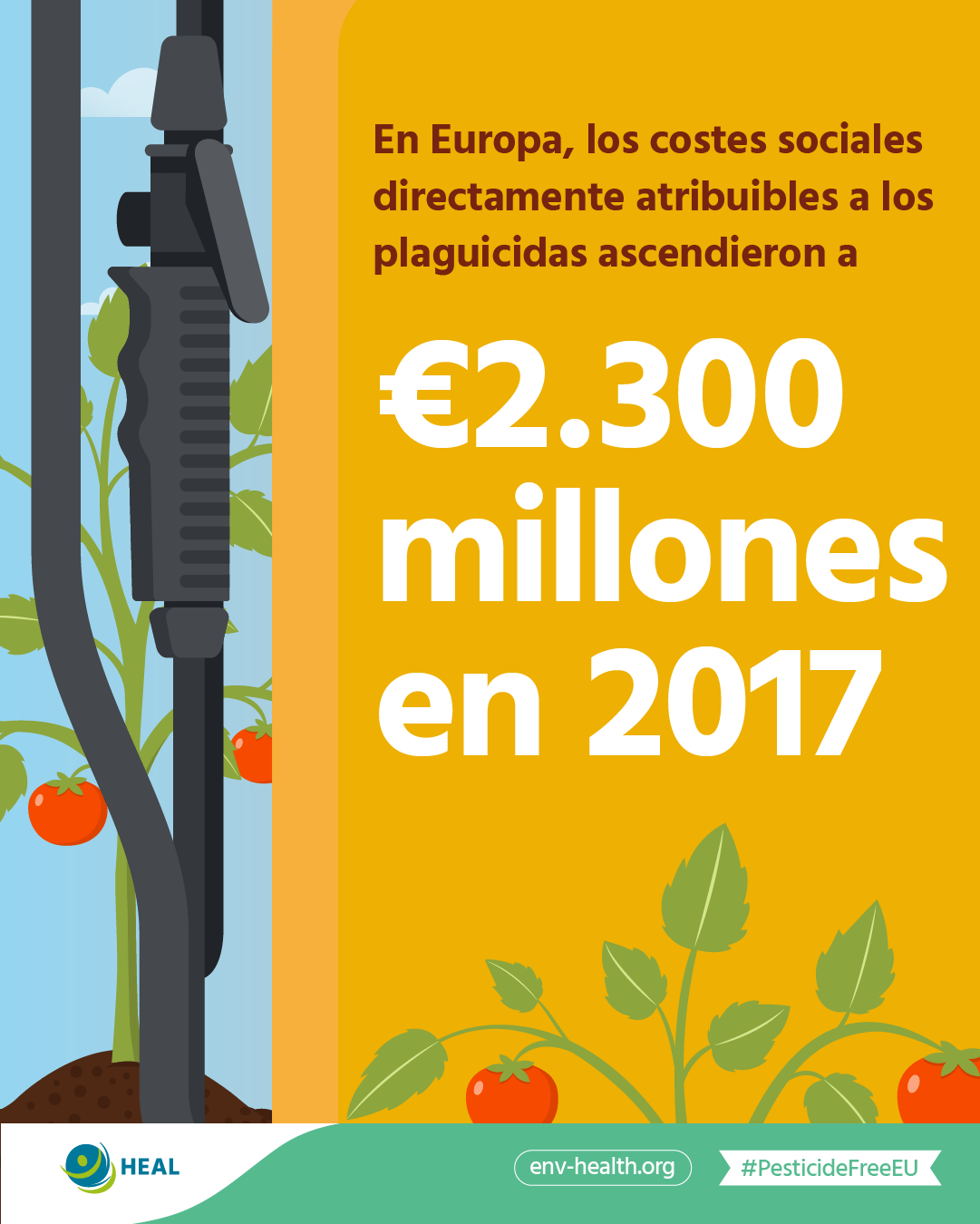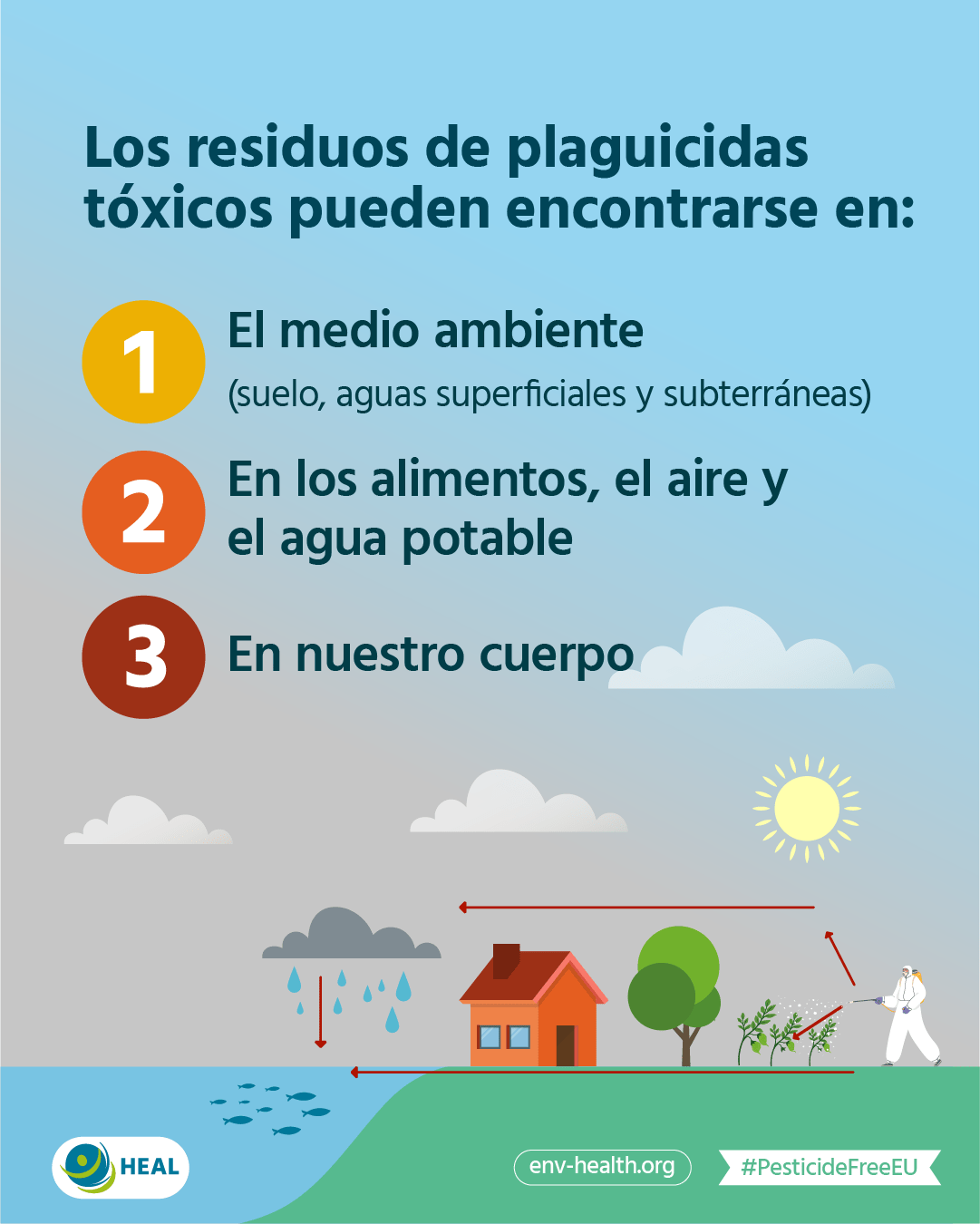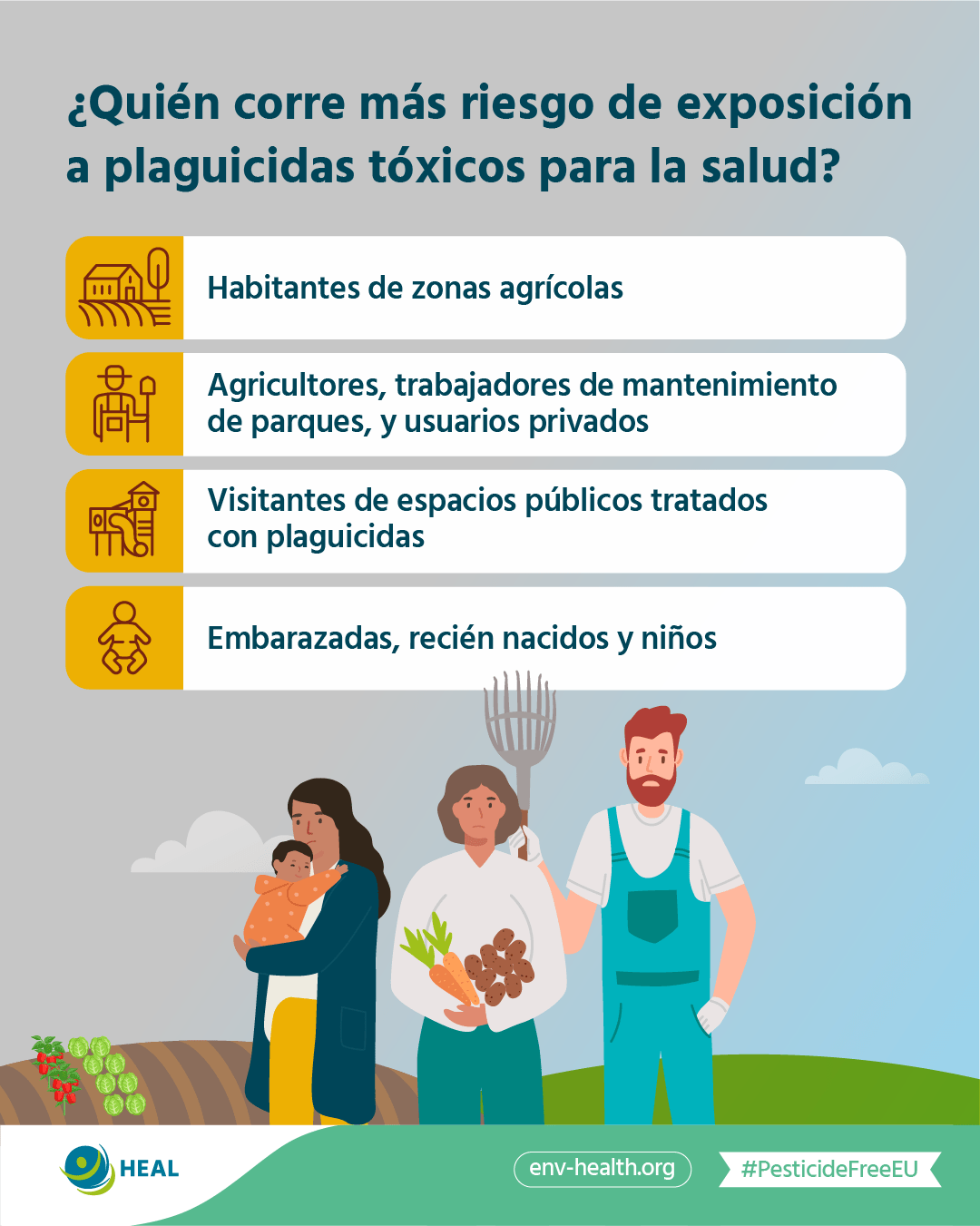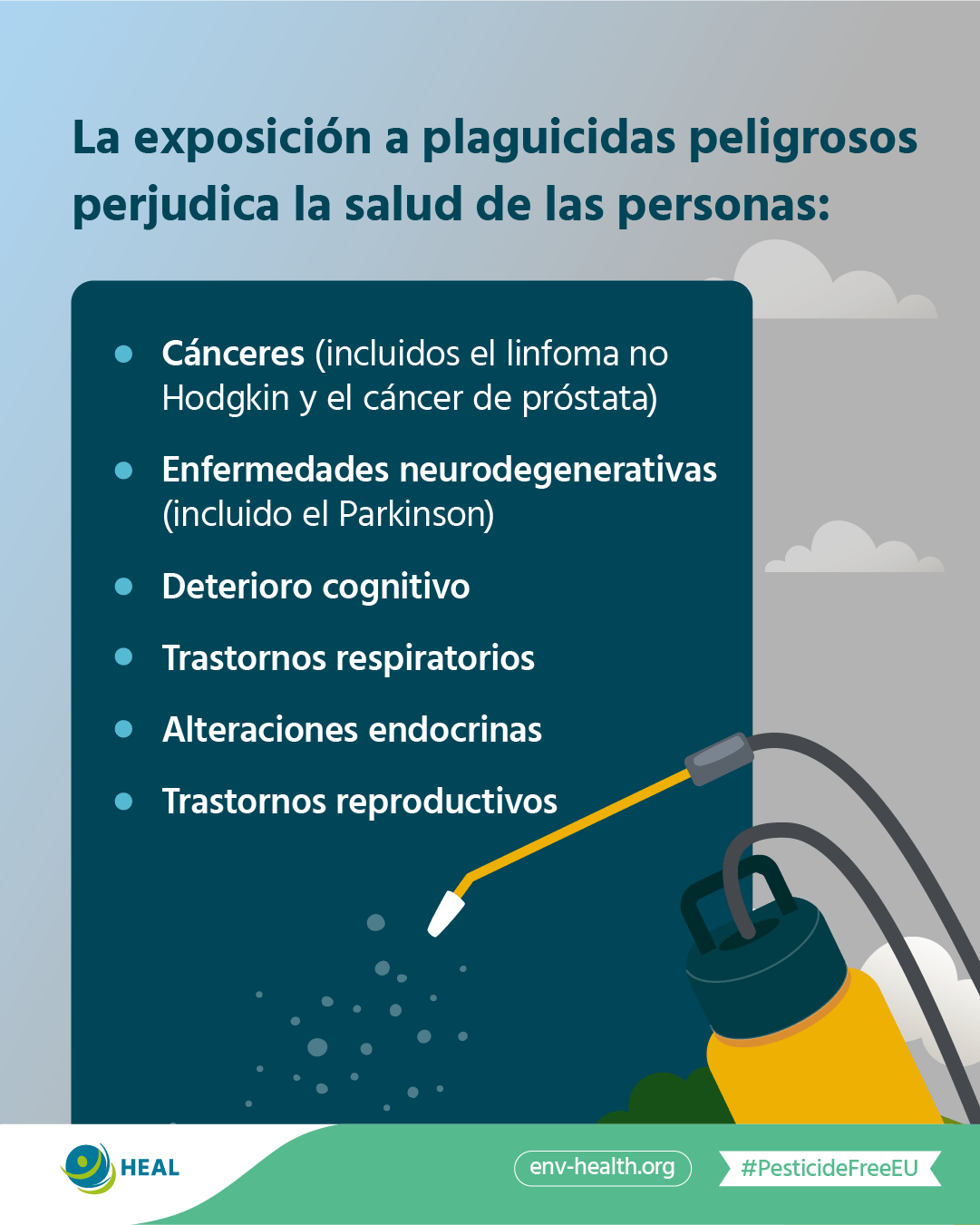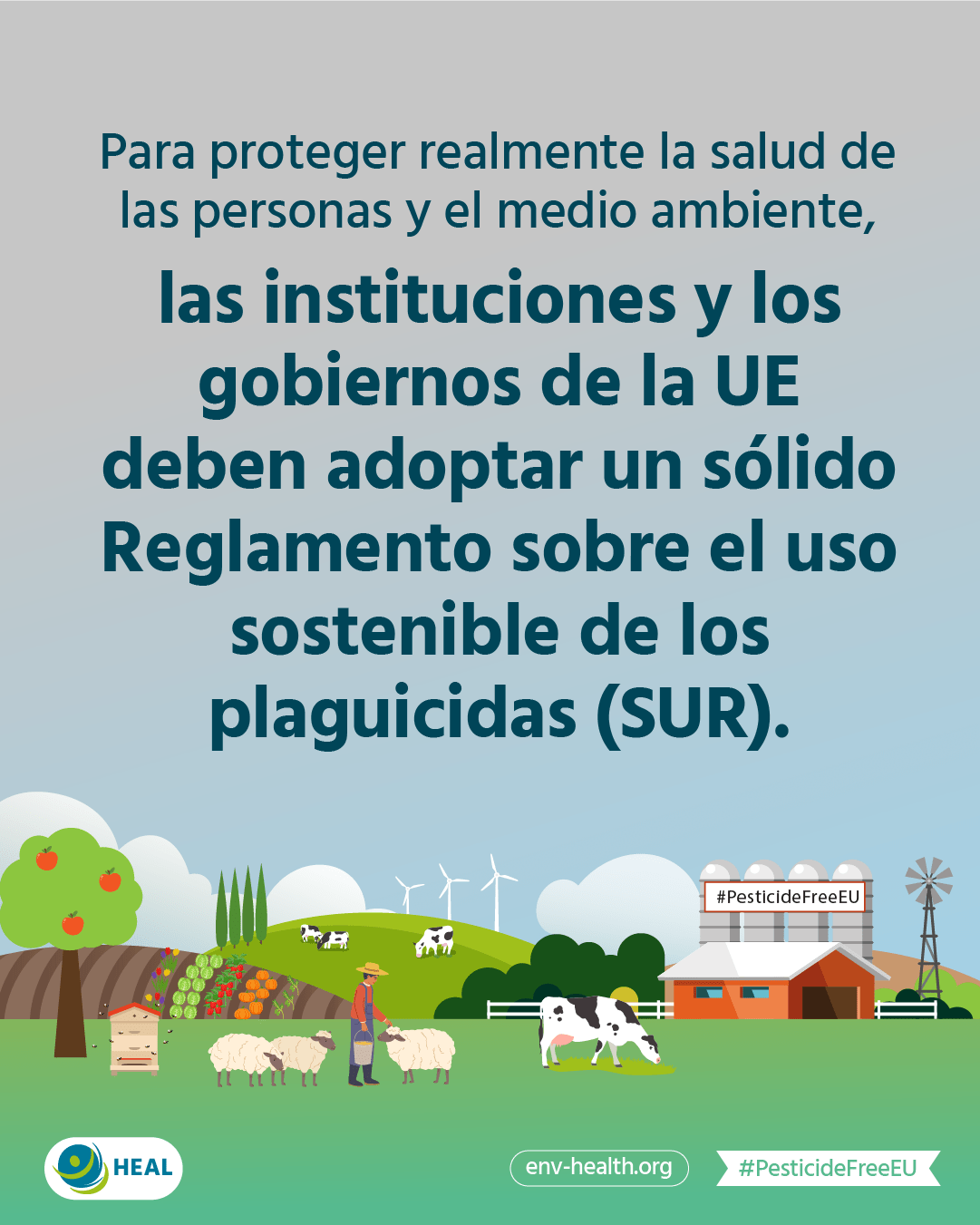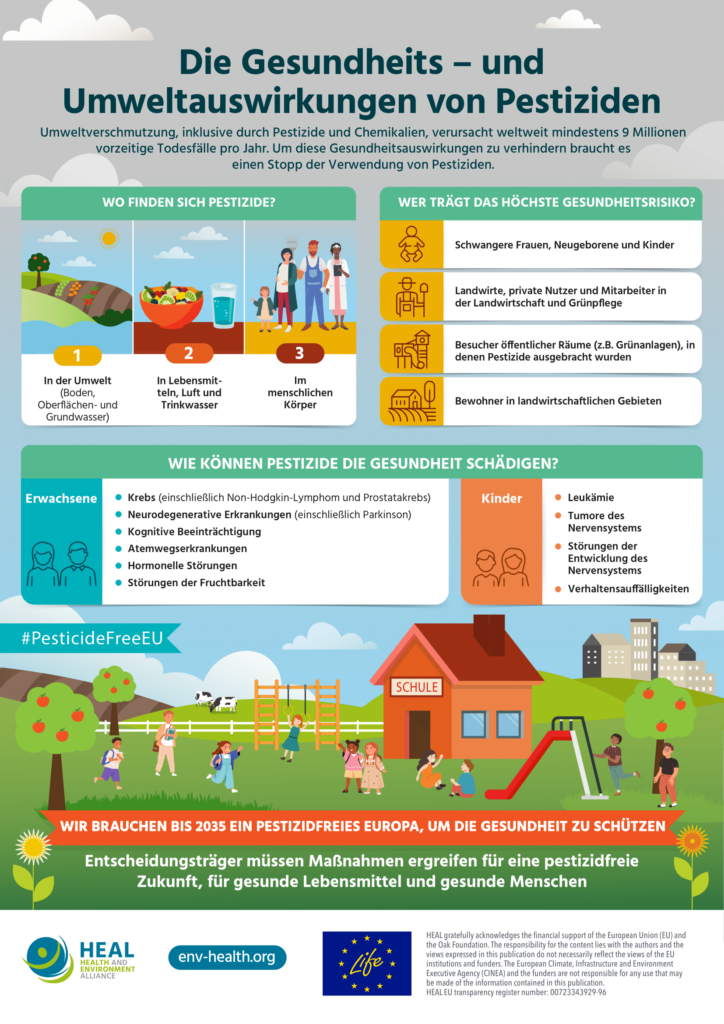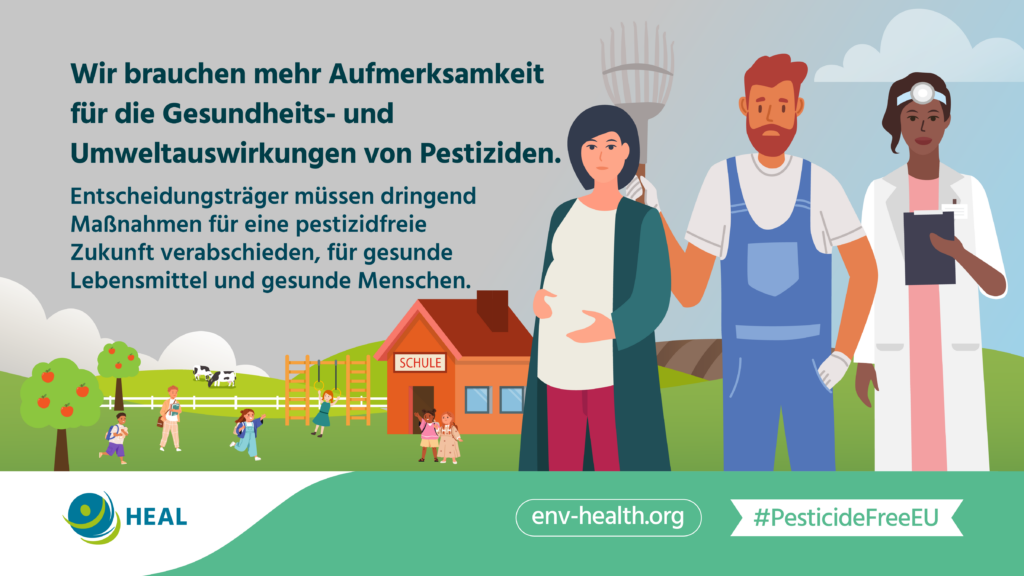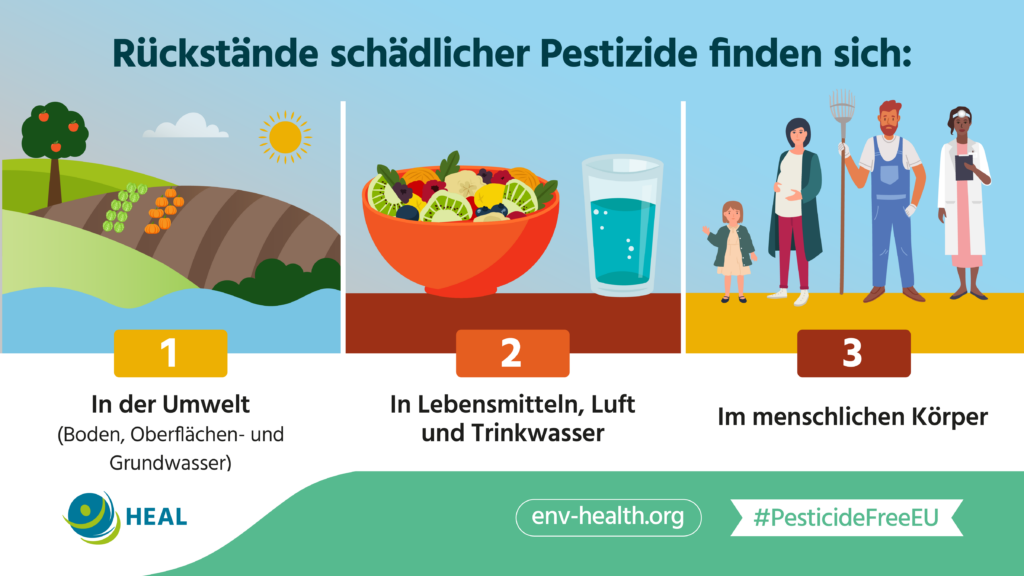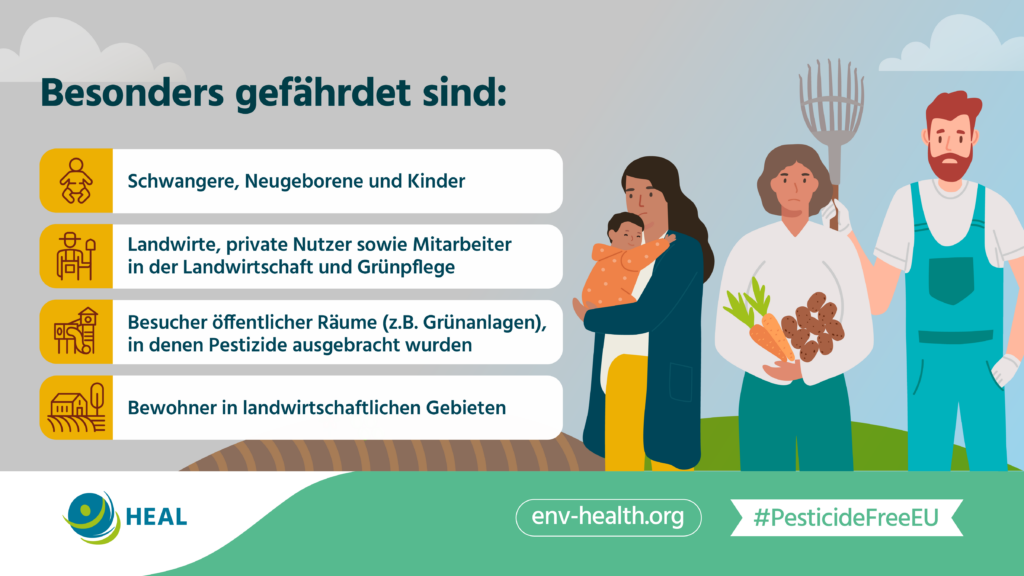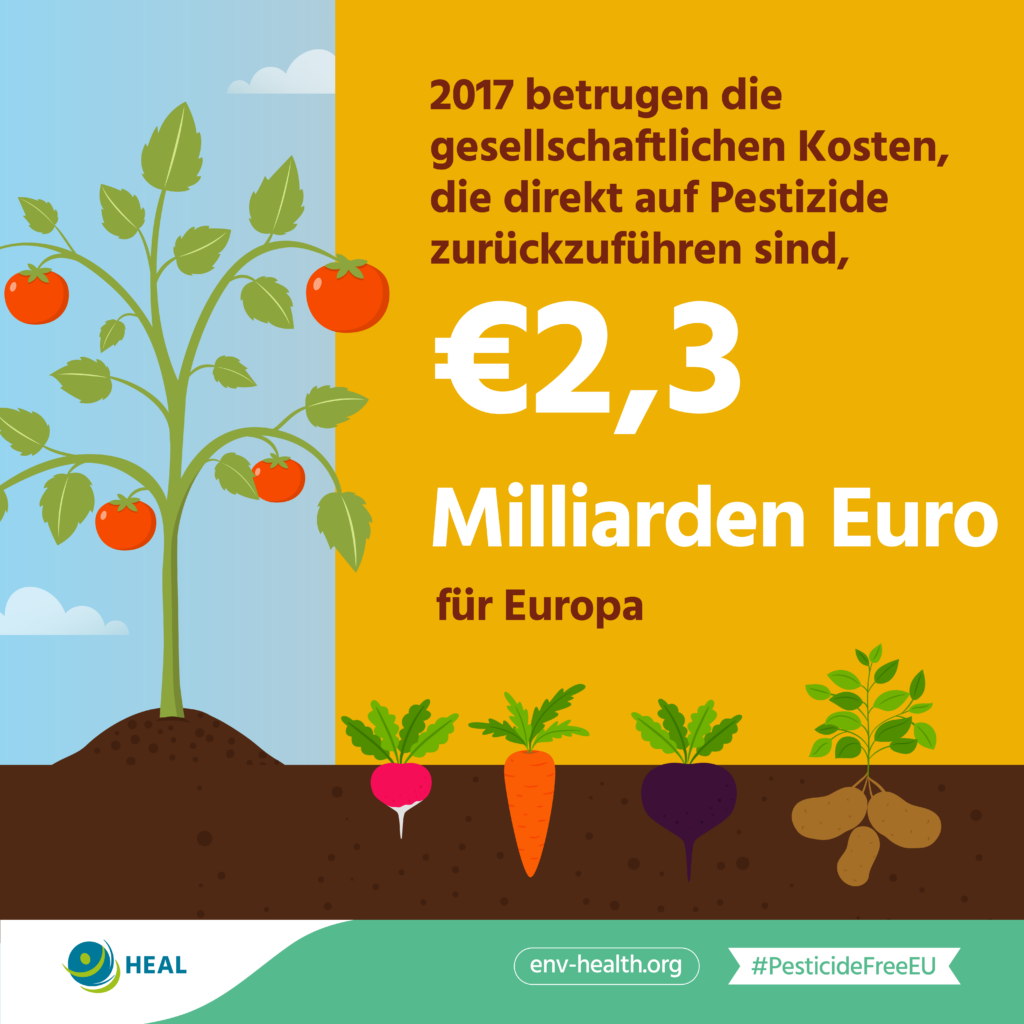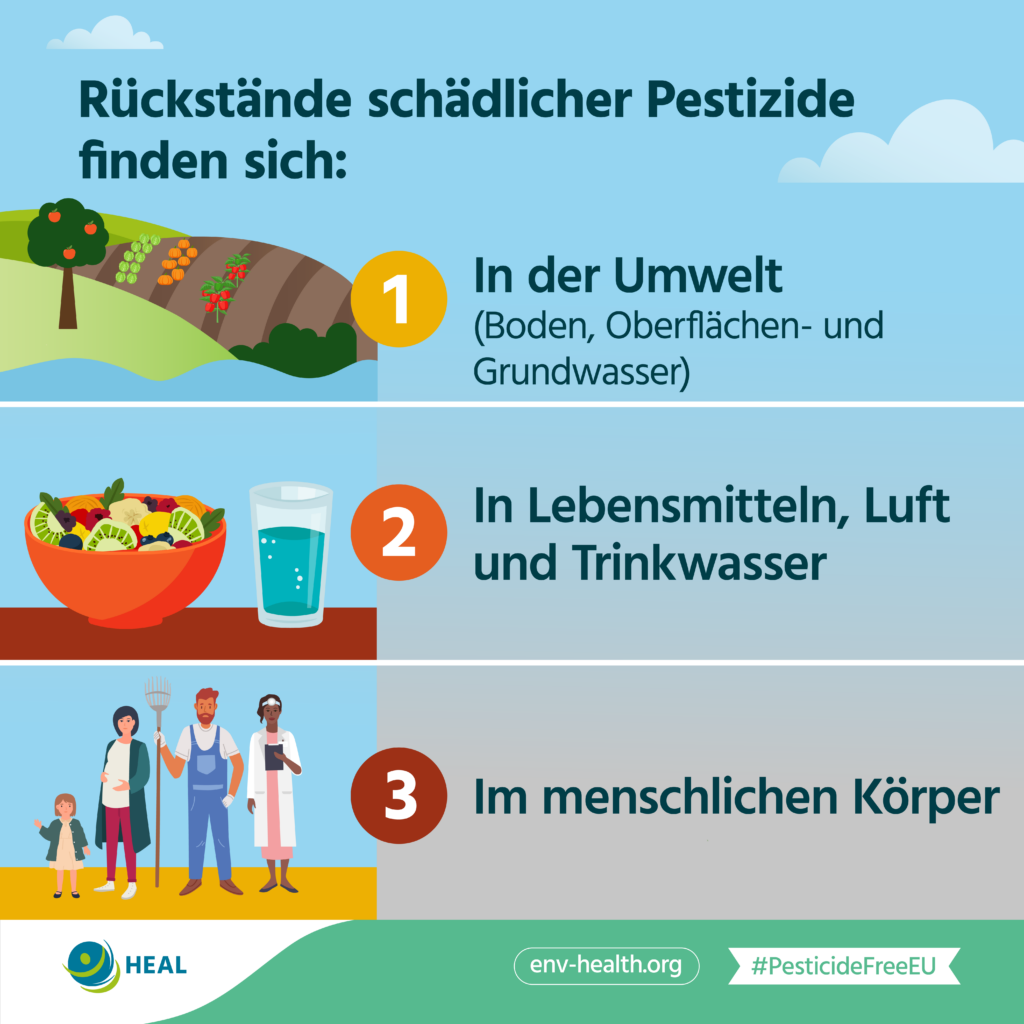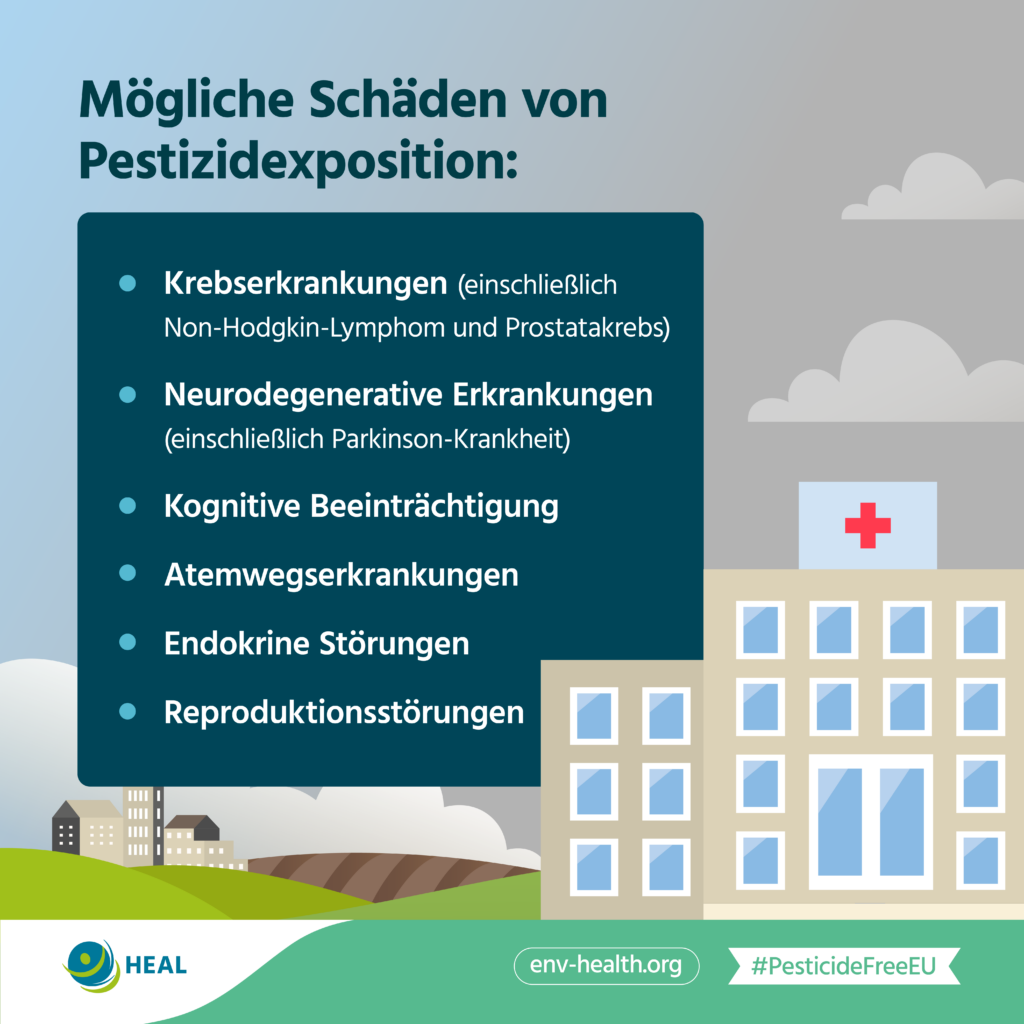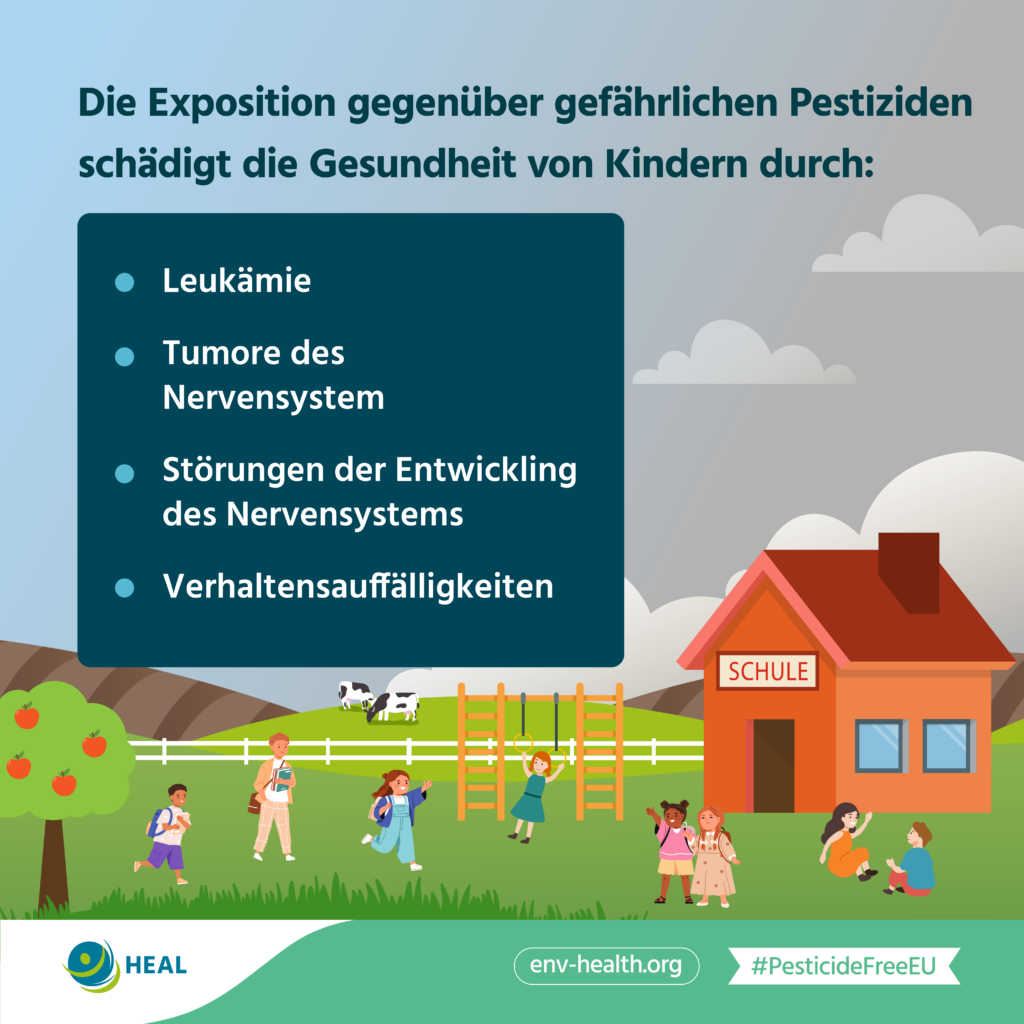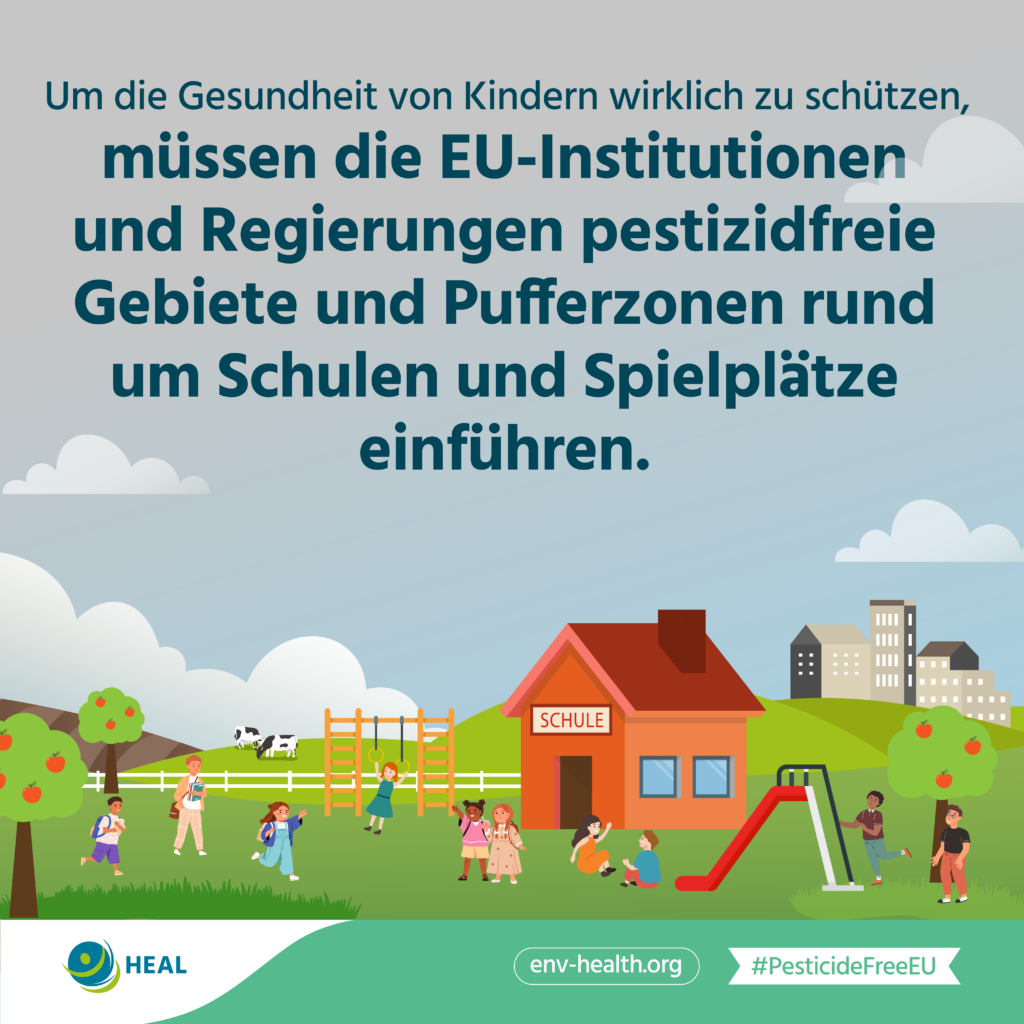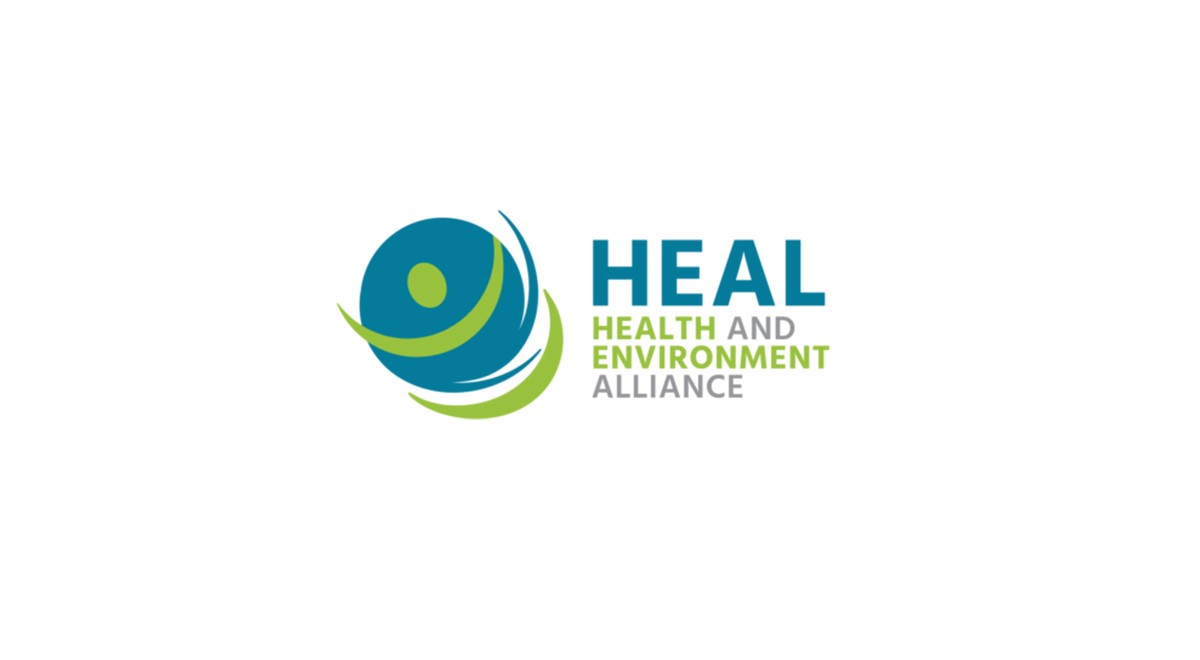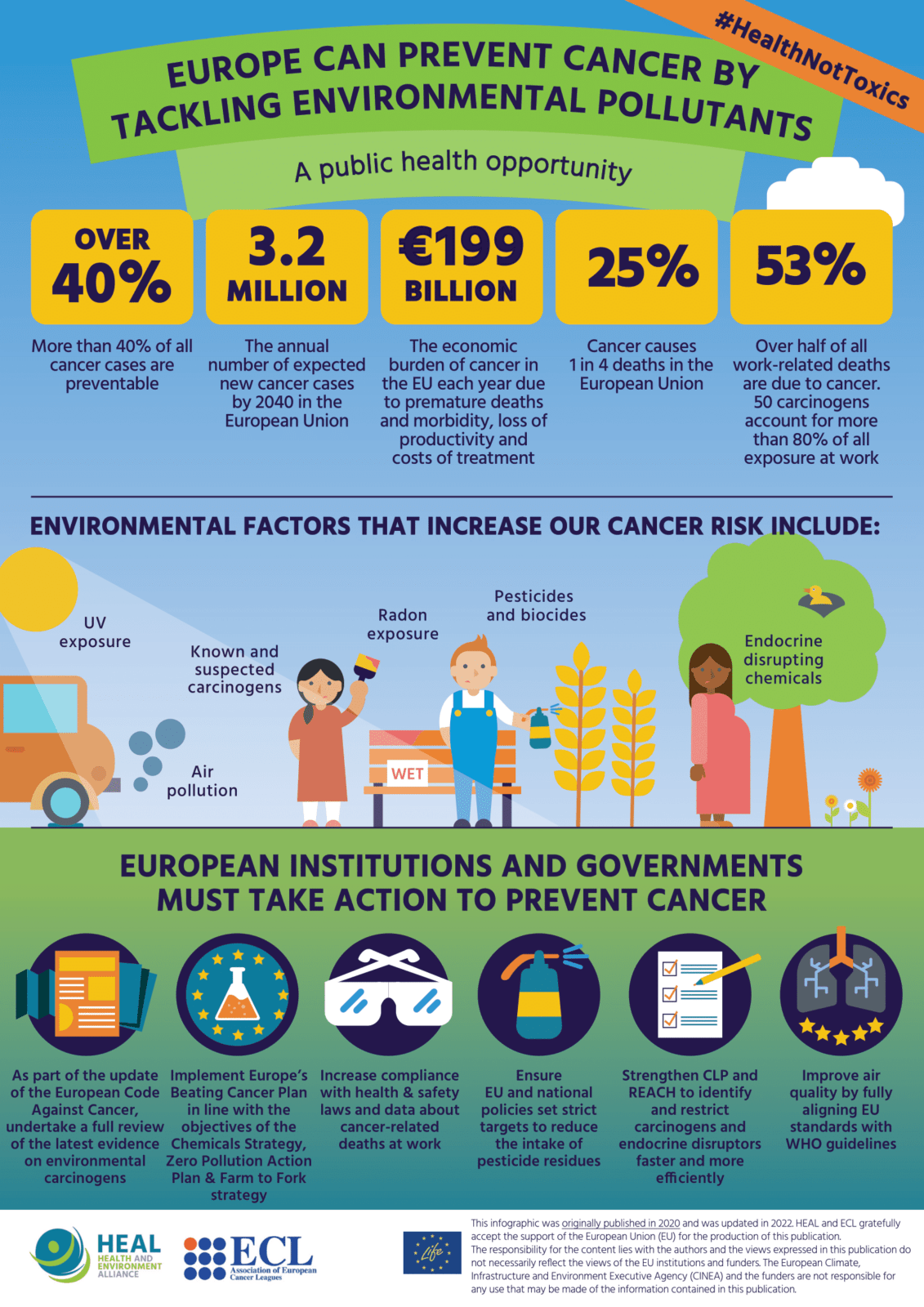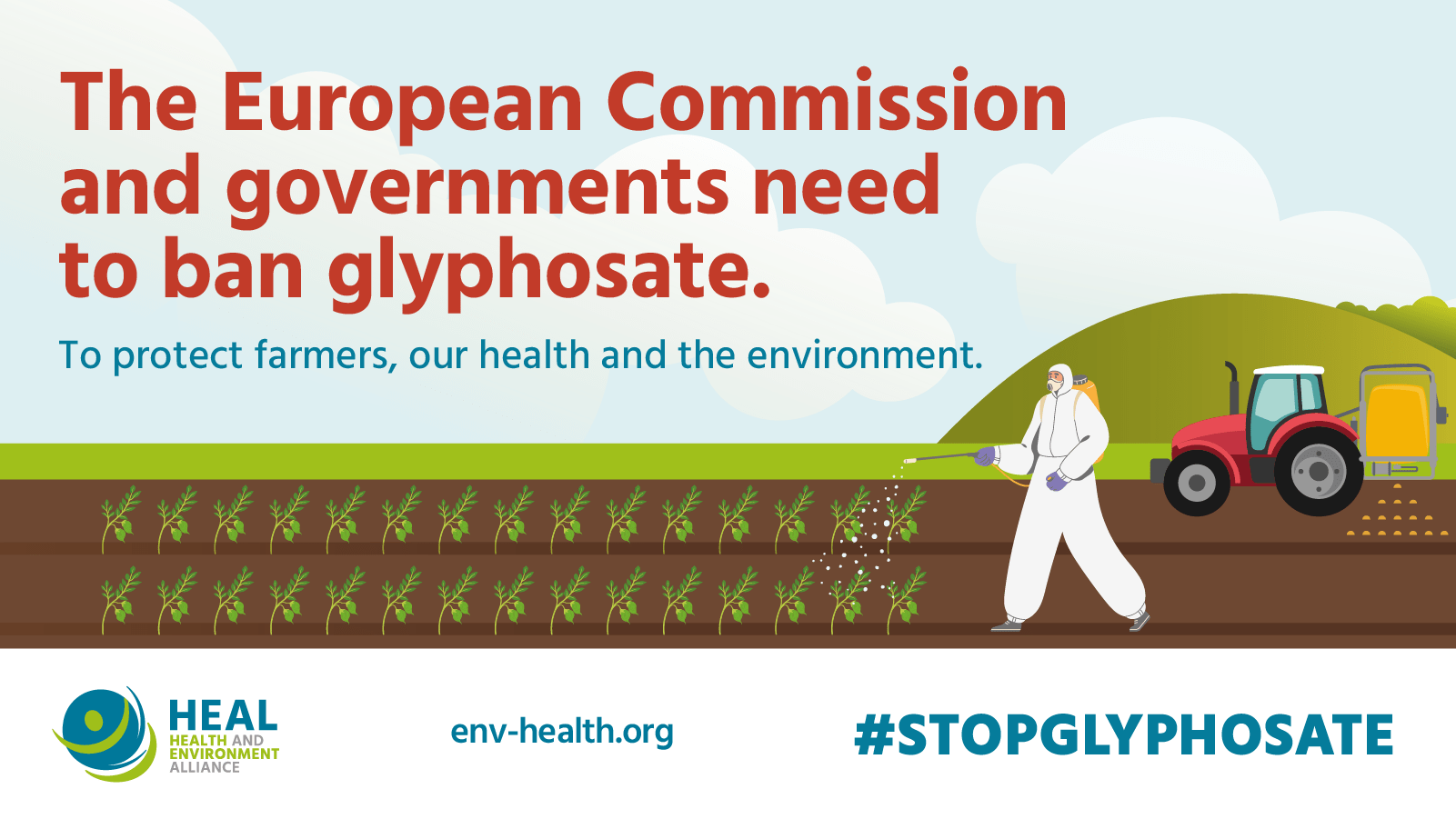Where are harmful pesticides found? Who is most at risk and how can exposure harm people’s health? To answer some of the most frequently asked questions regarding the impact of harmful pesticides on people’s health and the environment, the Health and Environment Alliance (HEAL) has launched a new easy-to-use infographic and supporting social media assets.
The impact of harmful pesticides on people’s health and the environment can no longer be ignored. Pollution, including from industrial chemicals and pesticides, causes at least nine million premature deaths every year worldwide. Exposure to pesticides in our food, air, drinking water and environment can increase the risk of cancers and infertility, harm children’s healthy development and disrupt our hormones.
Health costs associated with exposure to pesticides and other chemical substances exceed 10% of the global GDP. On a European scale, the societal costs directly attributable to pesticides were around €2.3 billion in 2017.
Increasingly research shows that current pesticide reduction measures put in place by some European countries fail to protect vulnerable groups from pesticide pollution. This is especially worrying considering that a European Commission proposal for a new regulation on the sustainable use of pesticides is less stringent than the rules being implemented by some regional governments.
The way forward is clear: to protect people’s health and the environment, policy makers need to implement the EU Farm to Fork strategy and phase out synthetic pesticides by 2035. Alternatives to some of the most harmful pesticides, such as glyphosate, are already available and show a transition to a pesticide-free future is possible.
Together with our members, HEAL will continue to advocate on the public health benefits of banning harmful pesticides across Europe. We will continue to stand with affected farmers, workers, their families and residents suffering from health problems as a result of exposure to hazardous substances. Examples of key EU legislative files we are following closely include the ongoing discussions around the potential renewal of the market license of glyphosate and the Sustainable Use of Pesticides Regulation (SUR).
Download our social media assets for X/Twitter:
Download our social media assets for Instagram:
Download our social media assets for Facebook:
Dove si trovano pesticidi nocivi? Chi è più a rischio e come può l’esposizione danneggiare la salute delle persone? Per rispondere ad alcune delle domande più frequenti riguardanti l’impatto dei pesticidi nocivi sulla salute delle persone e l’ambiente, la Health and Environment Alliance (HEAL) ha lanciato una nuova infografica facile da usare per comunicare questi contenuti.
Download as a PDF
Download our social media assets for X/Twitter:
Download our social media assets for Facebook and Instagram:
We thank the International Society of Doctors for the Environment (ISDE) Italy for supporting this translation.
La pollution, notamment celle causée par les pesticides et les produits chimiques, est à l’origine d’au moins 9 millions de décès prématurés chaque année dans le monde. L’interdiction des pesticides nocifs dans l’UE peut réduire ce poids.
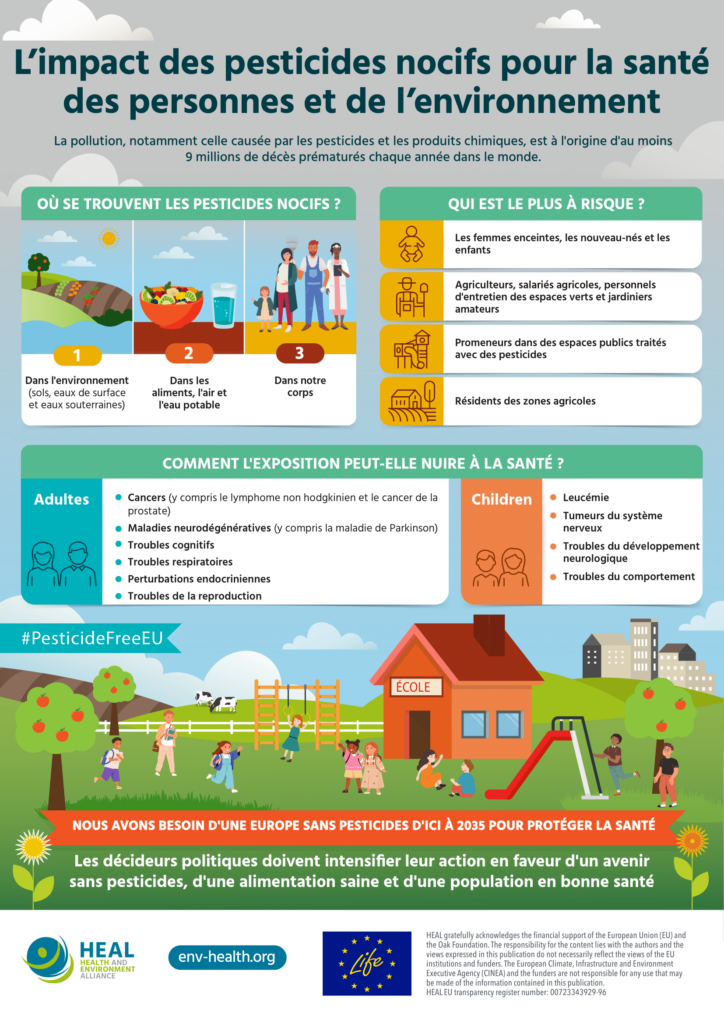 Download as a PDF
Download as a PDF
Download our social media assets for X/Twitter:
Download our social media assets for Facebook and Instagram:
We thank Générations Futures for supporting this translation.
Zanieczyszczenie, w tym spowodowane pestycydami i substancjami chemicznymi, powoduje co najmniej 9 milionów przedwczesnych zgonów rocznie na całym swiecie. Stopniowe wycofywanie stosowania szkodliwych pestycydów w UE moze zmniejszyc te liczbe.
Watch the video:
Download our social media assets for X/Twitter:
Download our social media assets for Facebook:
Vervuiling, inclusief door pesticiden en chemicaliën, veroorzaakt wereldwijd minstens 9 miljoen voortijdige sterfgevallen per jaar. Het uitfaseren van schadelijke pesticiden in de EU kan dit aantal verminderen.
Watch the video:
Download our social media assets for X/Twitter:
Download our social media assets for Facebook & Instagram:
La contaminación, incluida la provocada por plaguicidas y sustancias químicas, causa al menos 9 millones de muertes prematuras al año en todo el mundo. Prohibir los plaguicidas tóxicos en la UE puede reducir esta cifra.
Download our social media assets for Twitter:
Download our social media assets for Facebook:
Download our social media assets for Instagram:
We thank Ecologistas en Acción for supporting this translation.
Umweltverschmutzung, inklusive durch Pestizide und Chemikalien, verursacht weltweit mindestens 9 Millionen vorzeitige Todesfälle pro Jahr. Um diese Gesundheitsauswirkungen zu verhindern braucht es einen Stopp der Verwendung von Pestiziden.
Download our social media assets for X/Twitter:
Download our social media assets for Facebook and Instagram:

